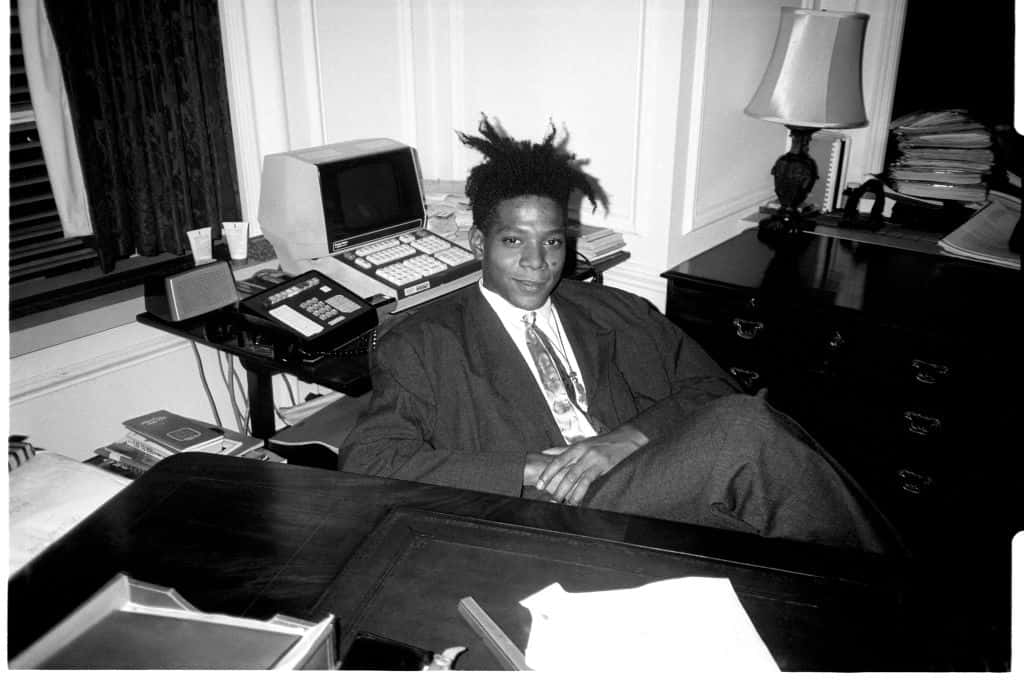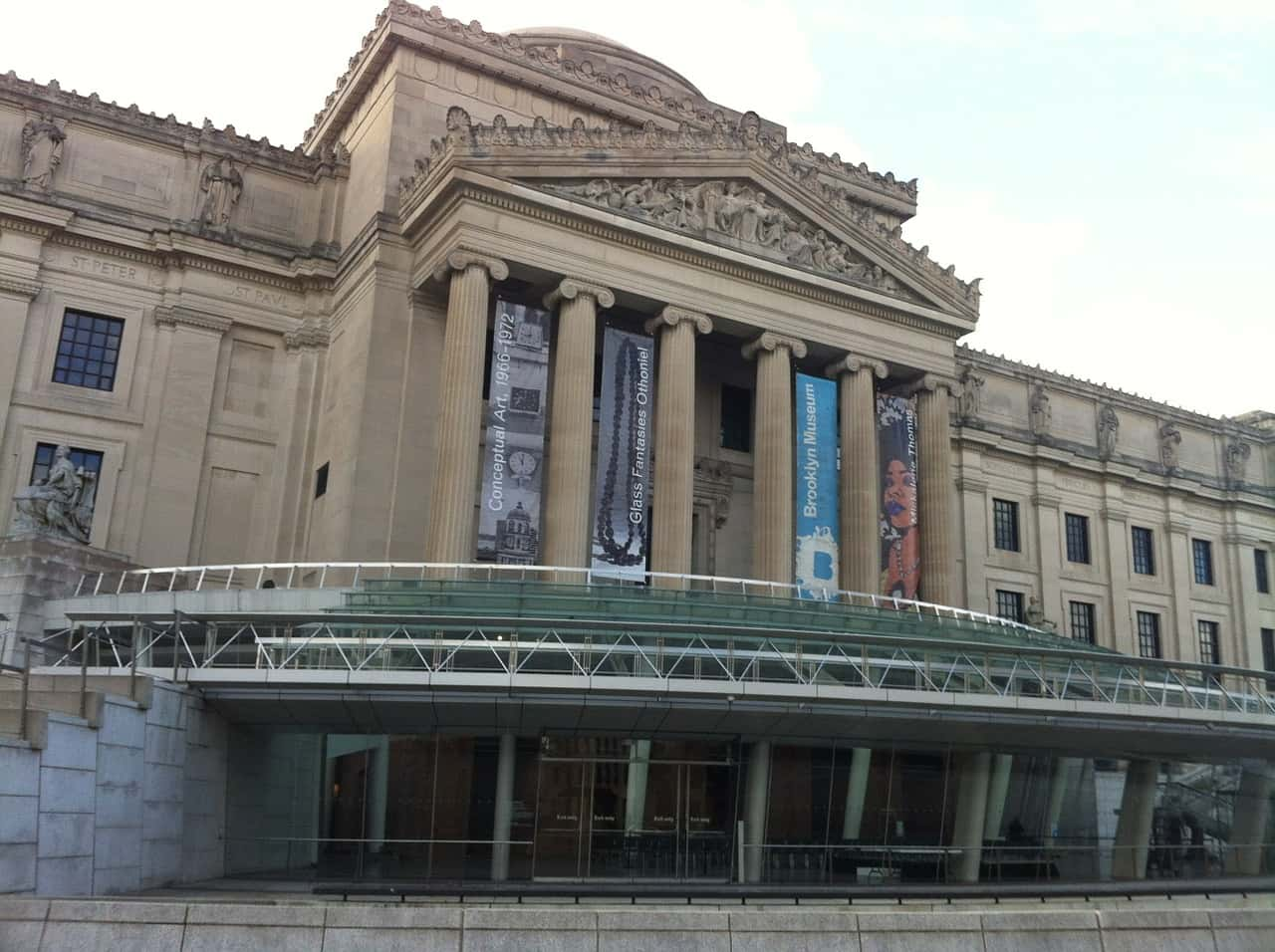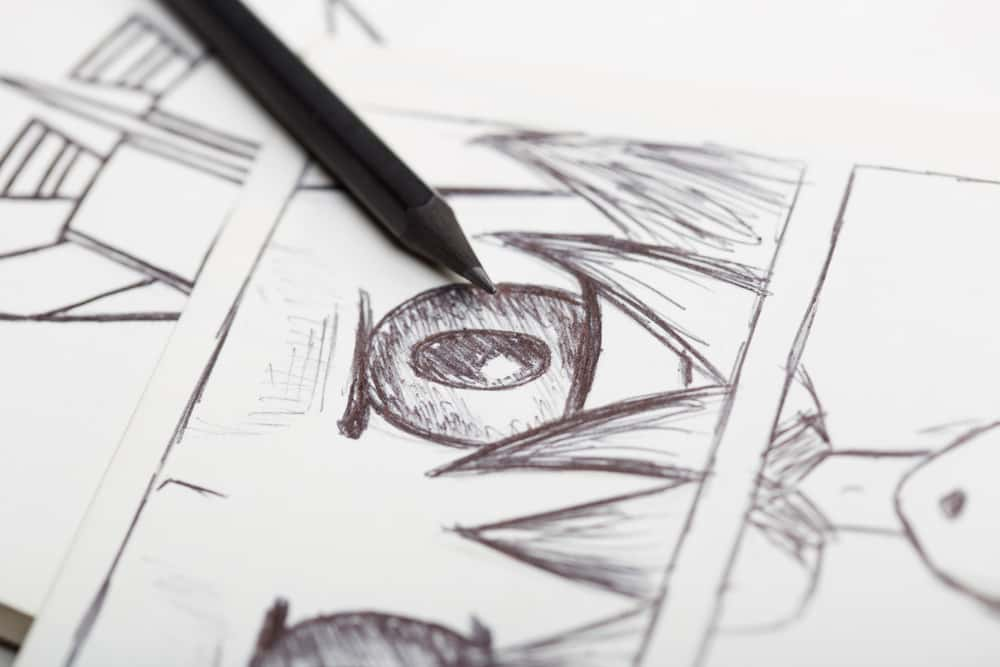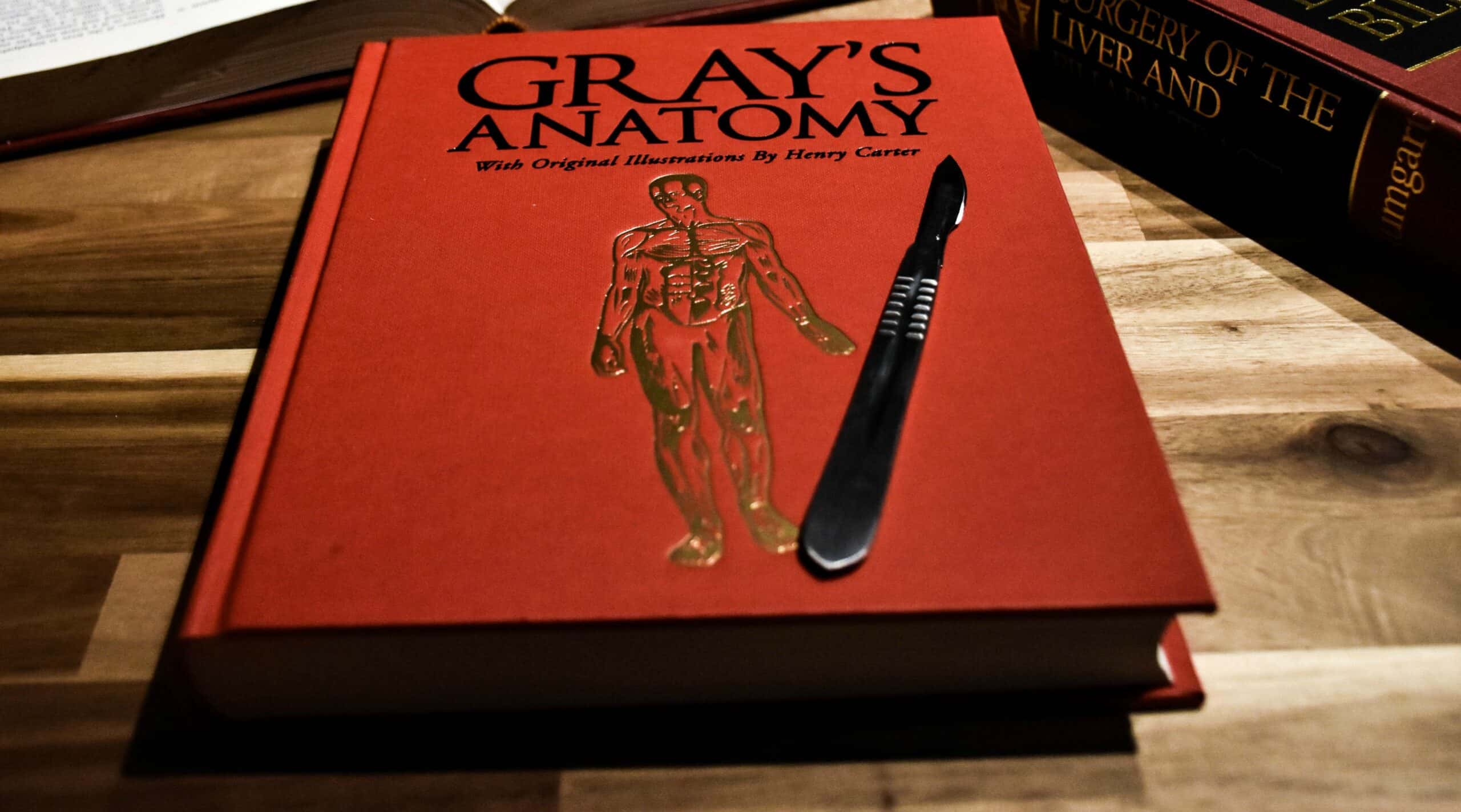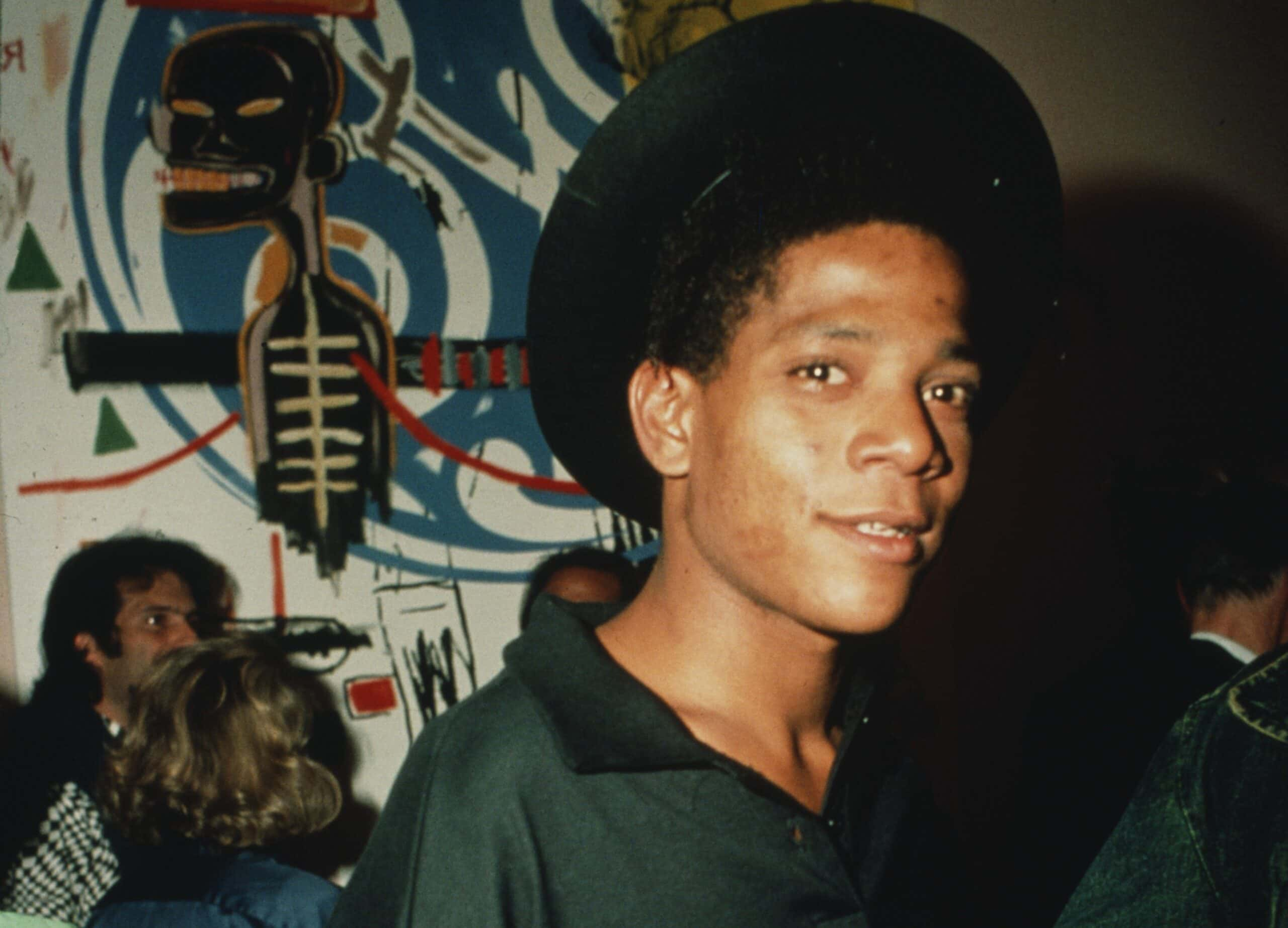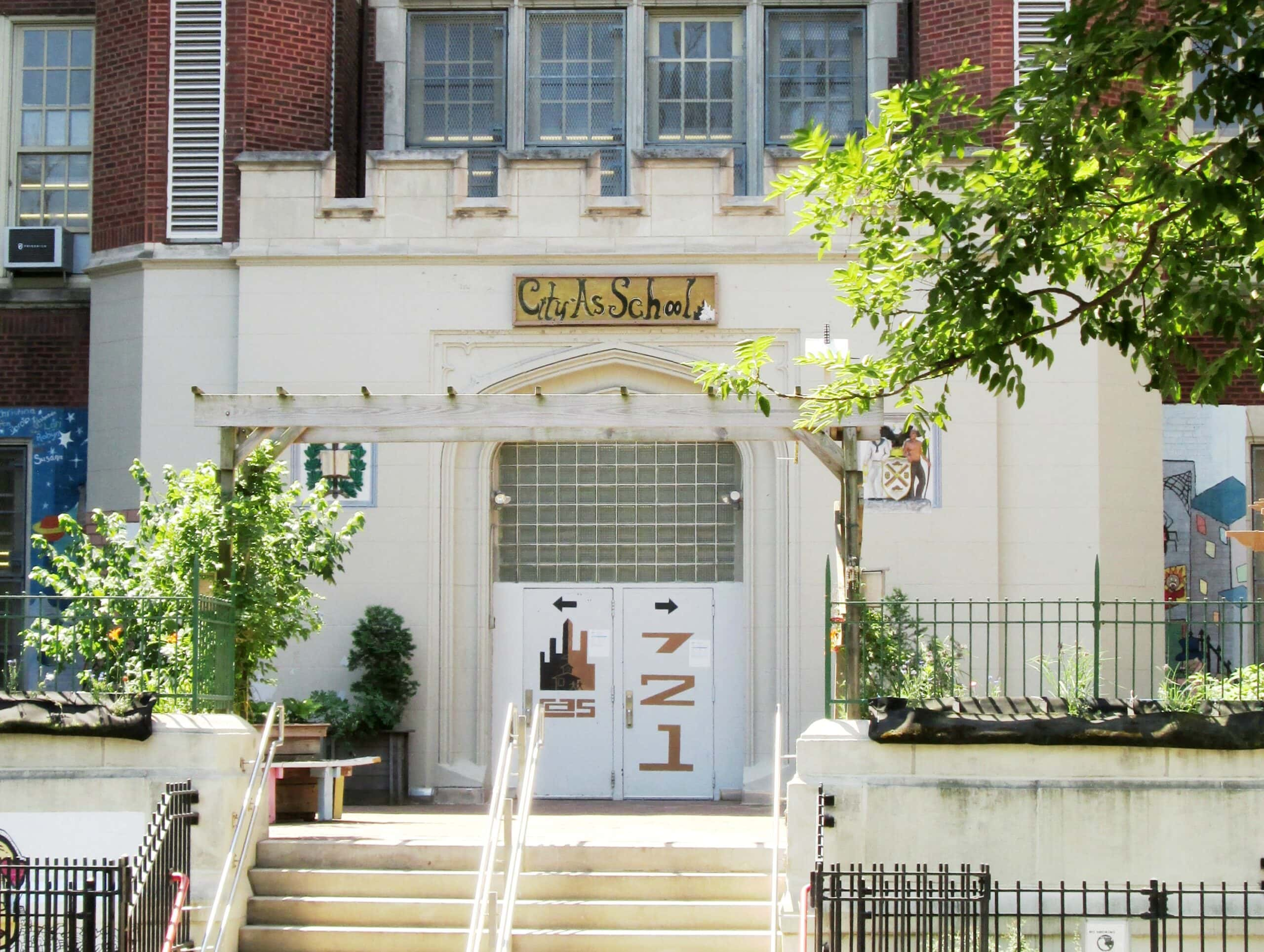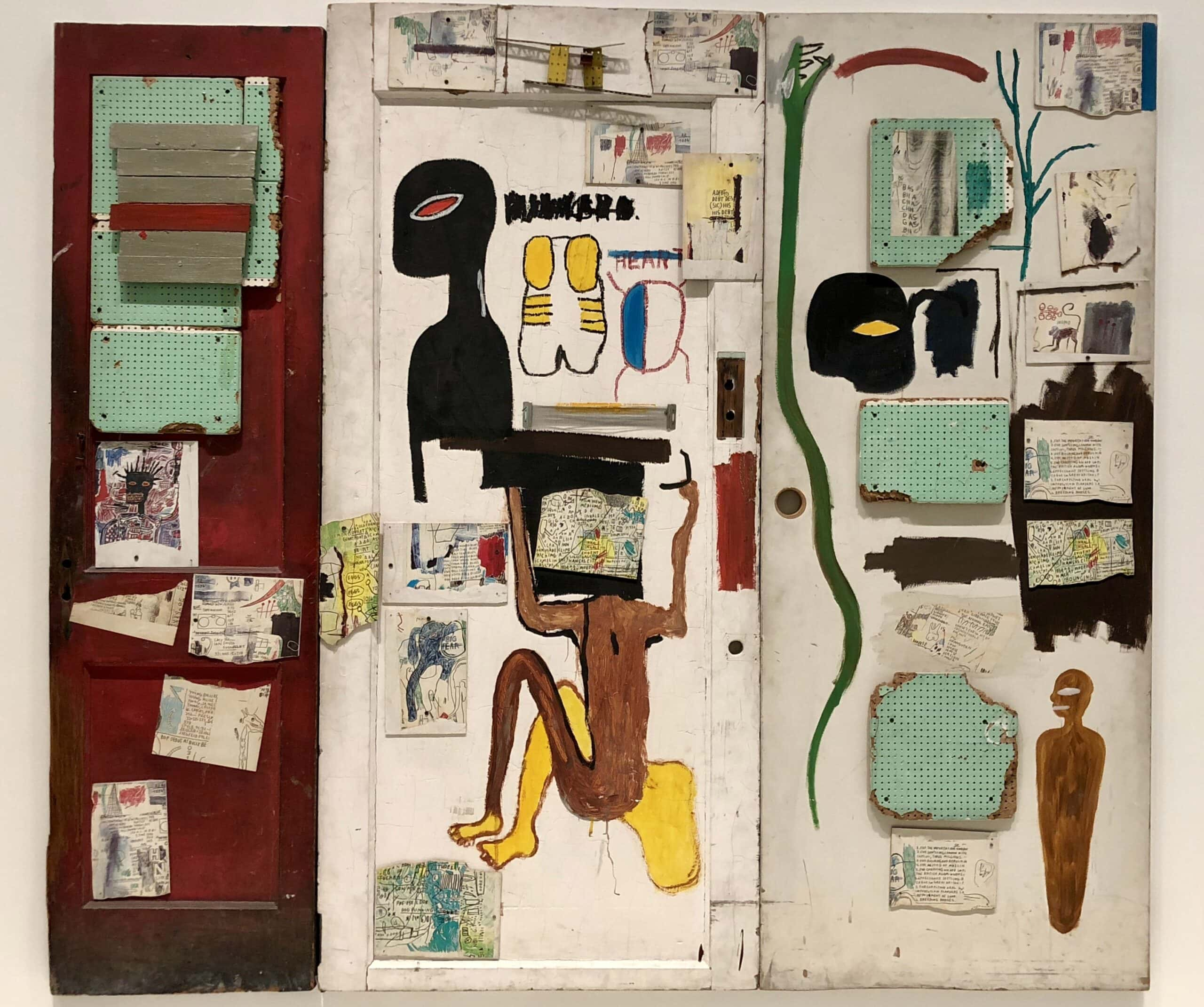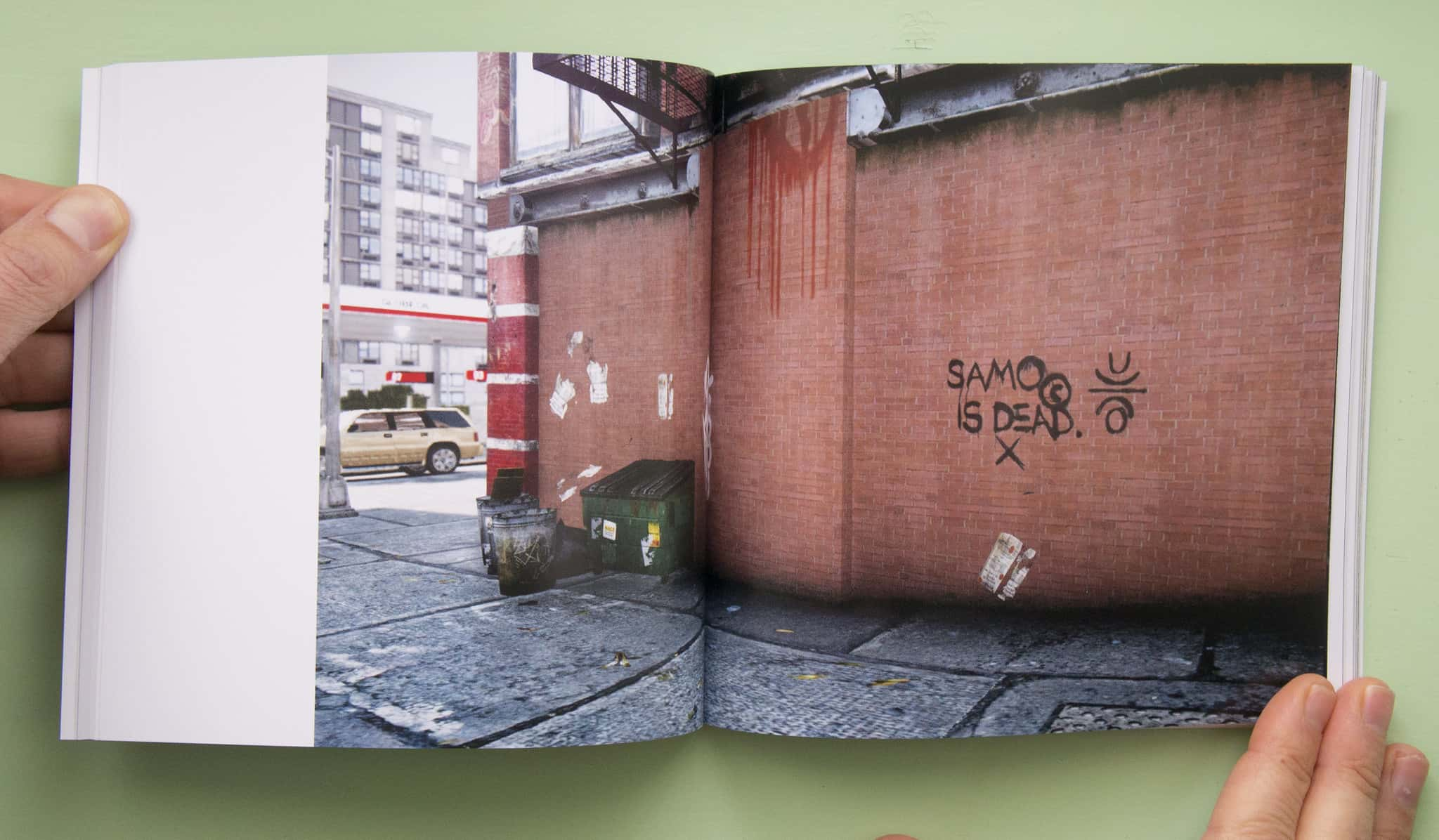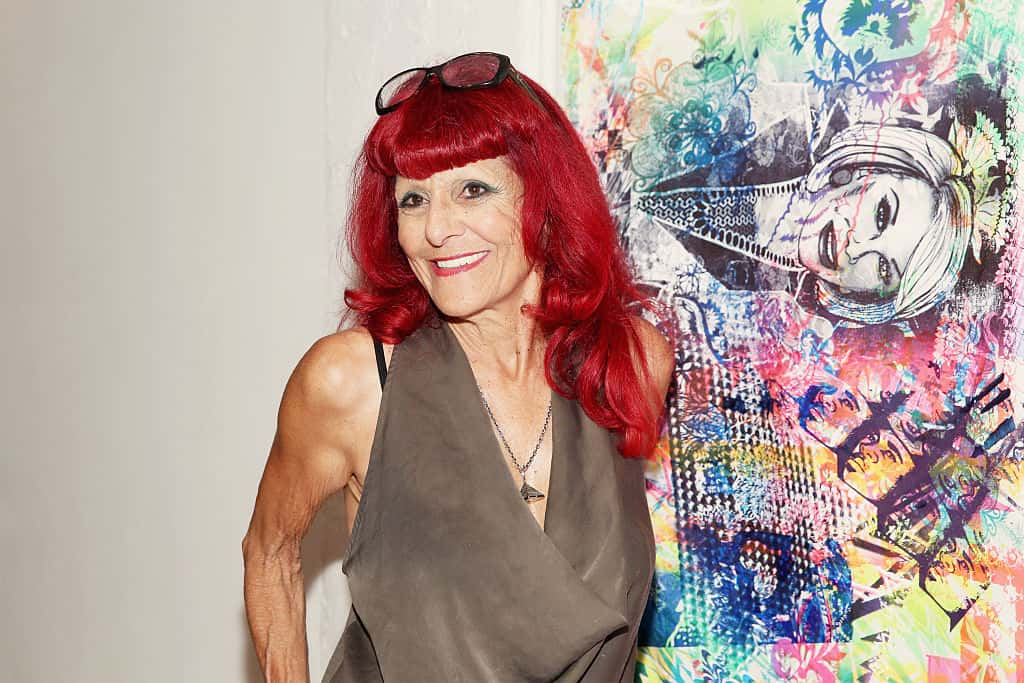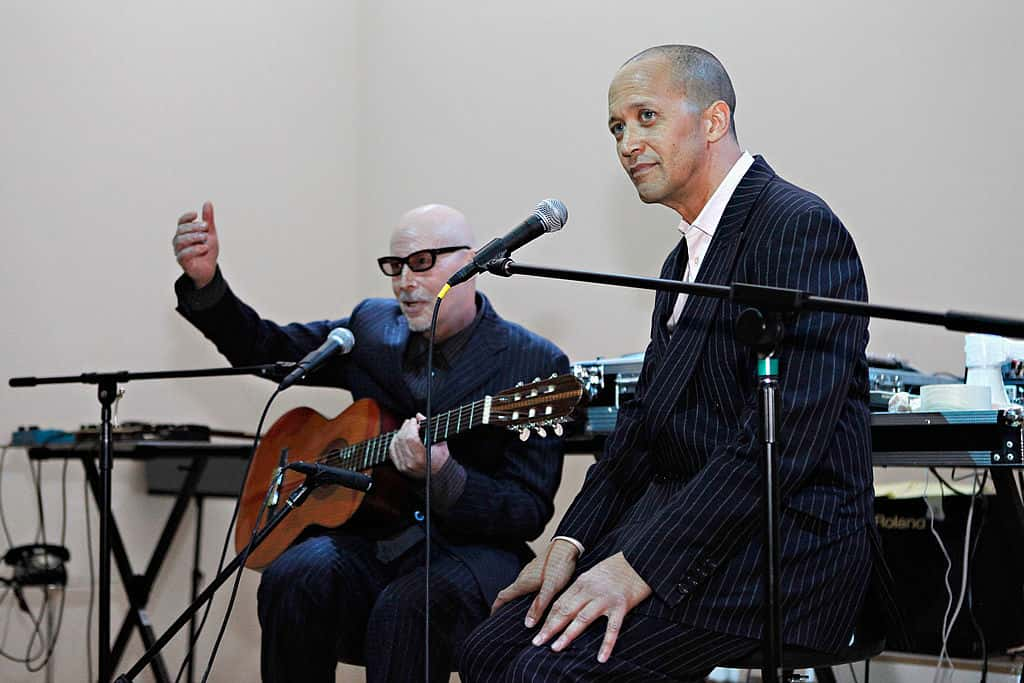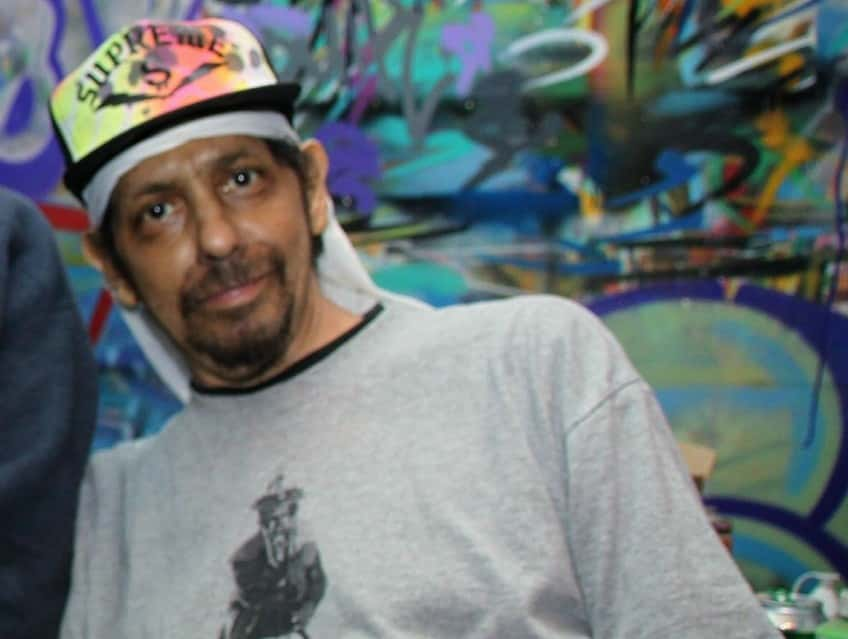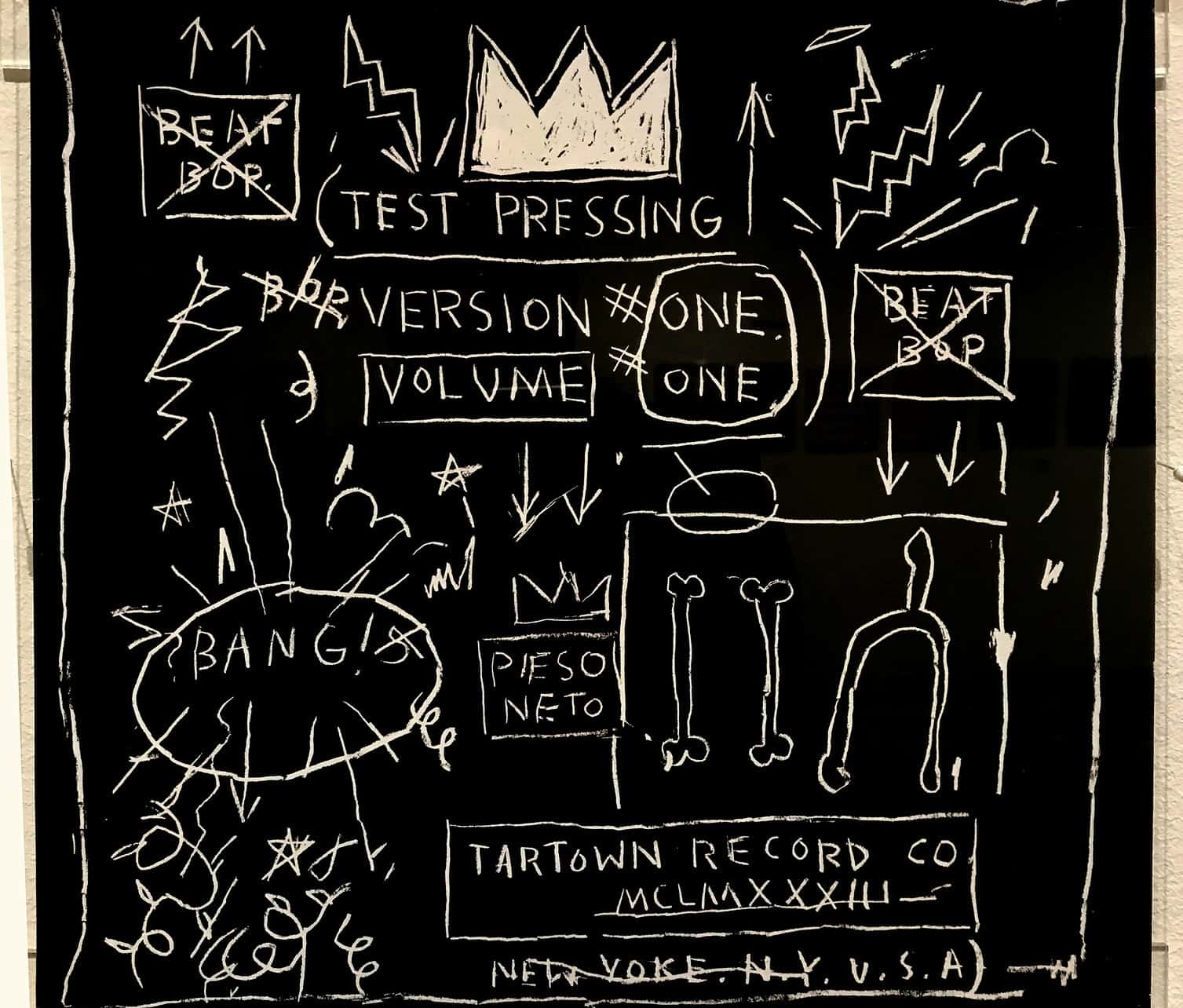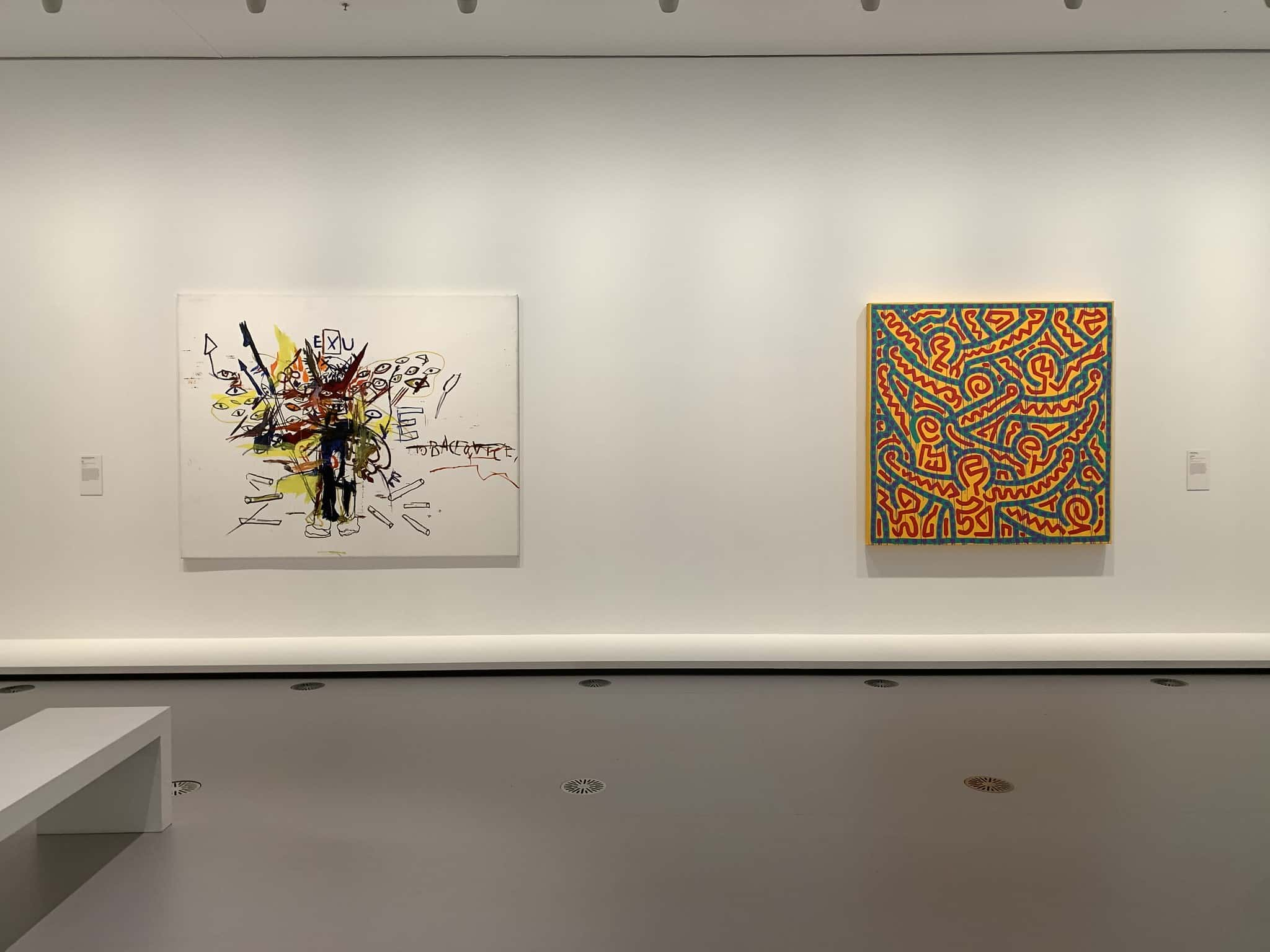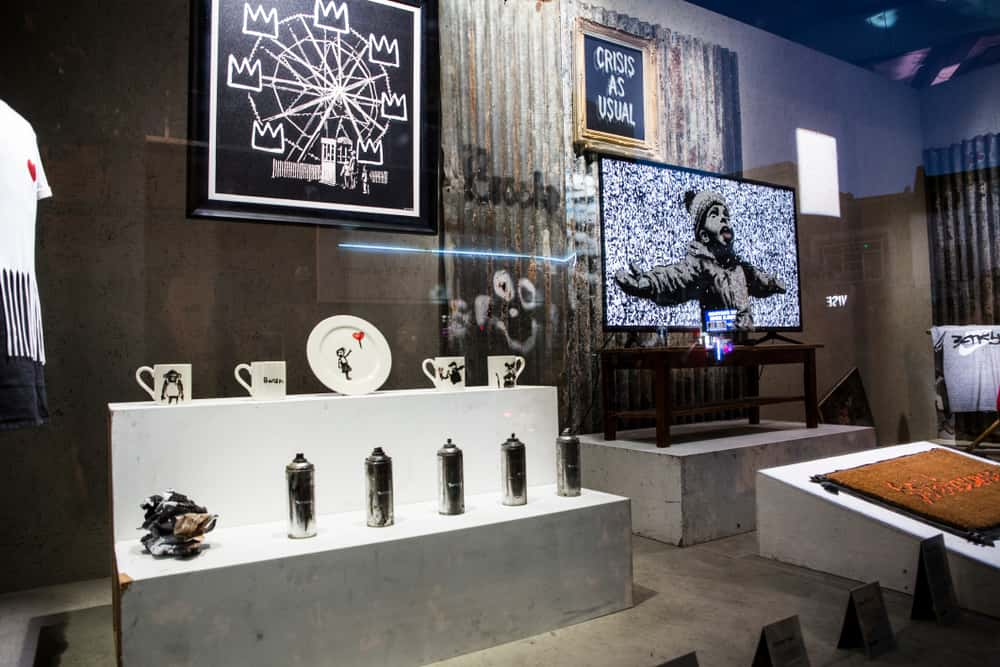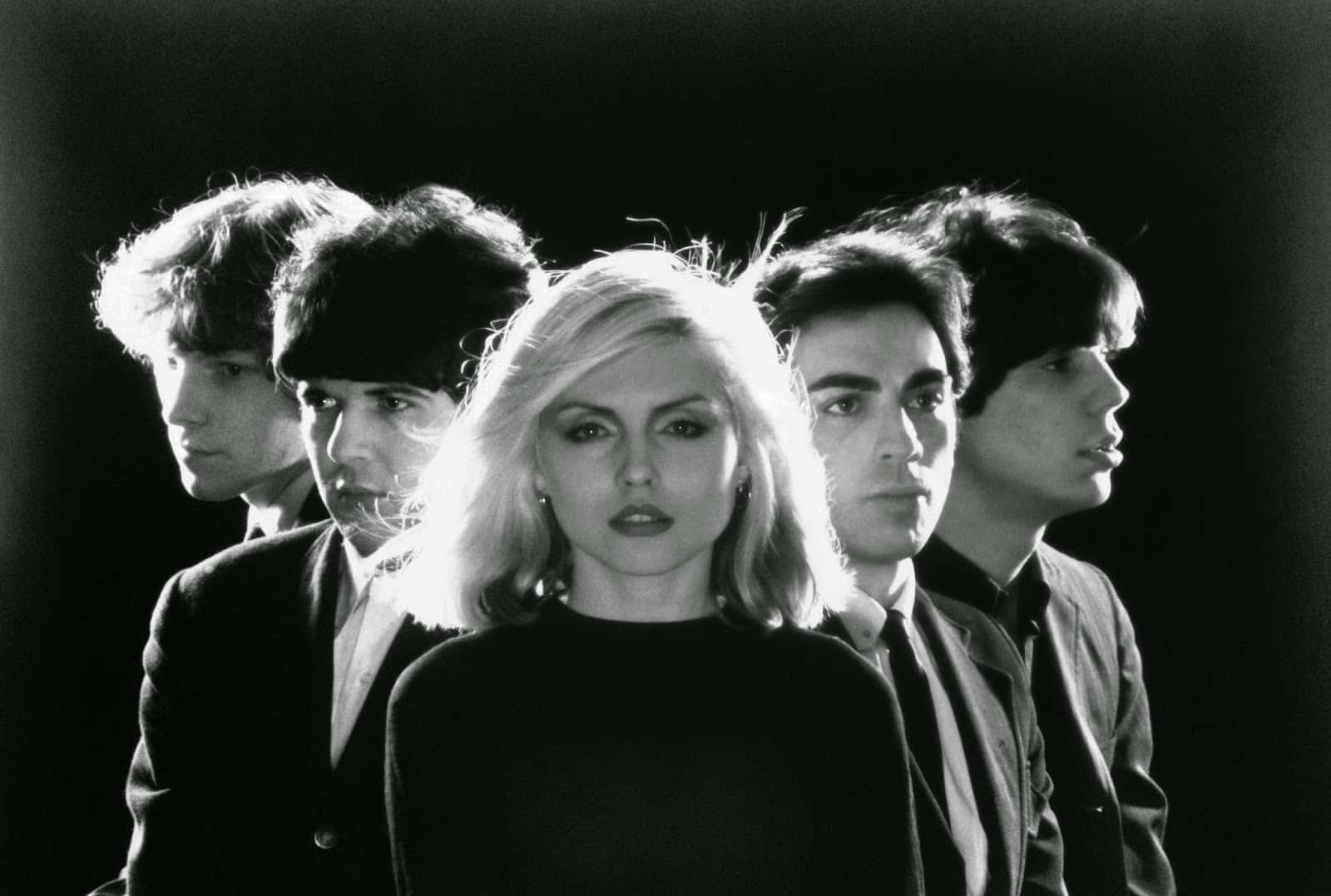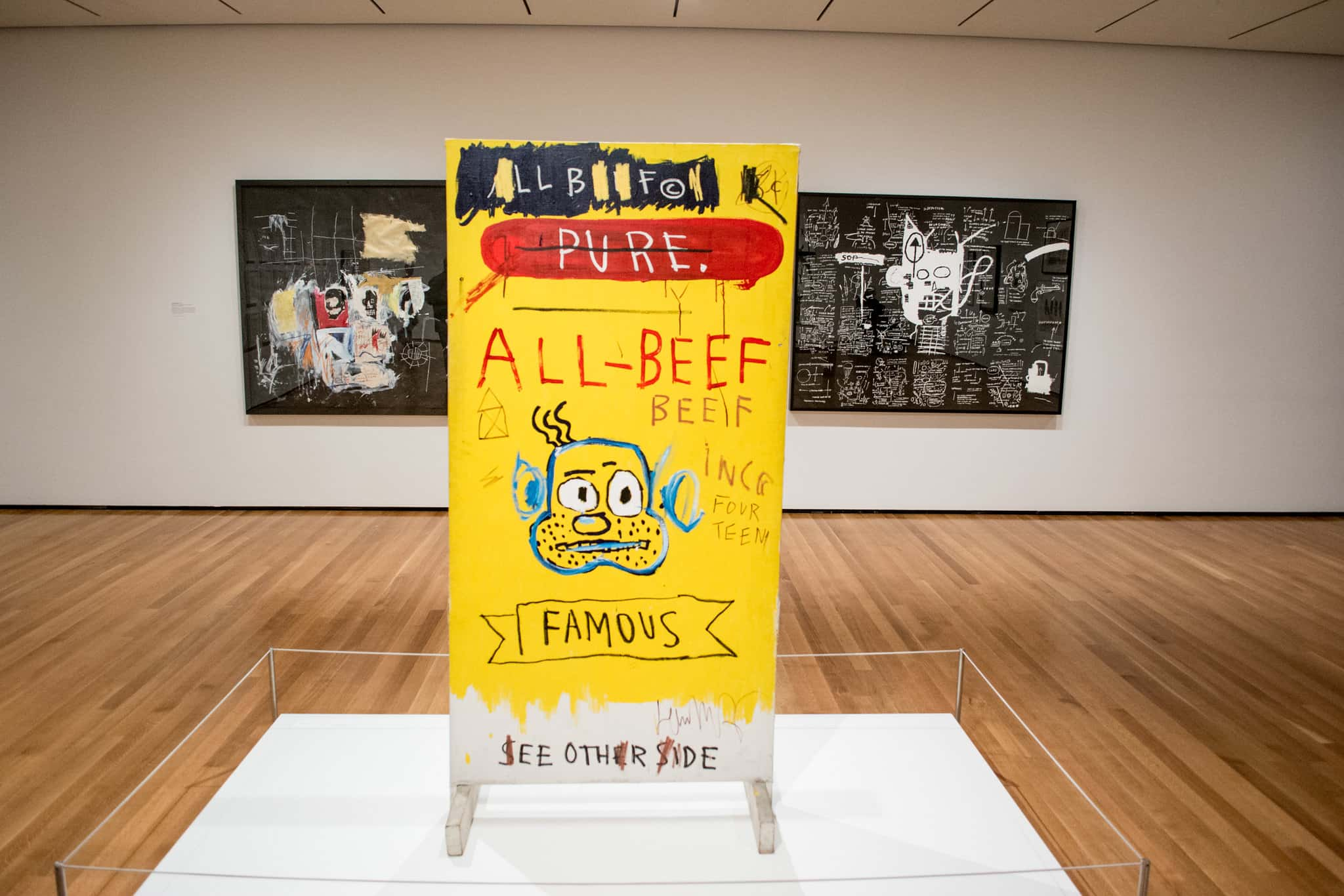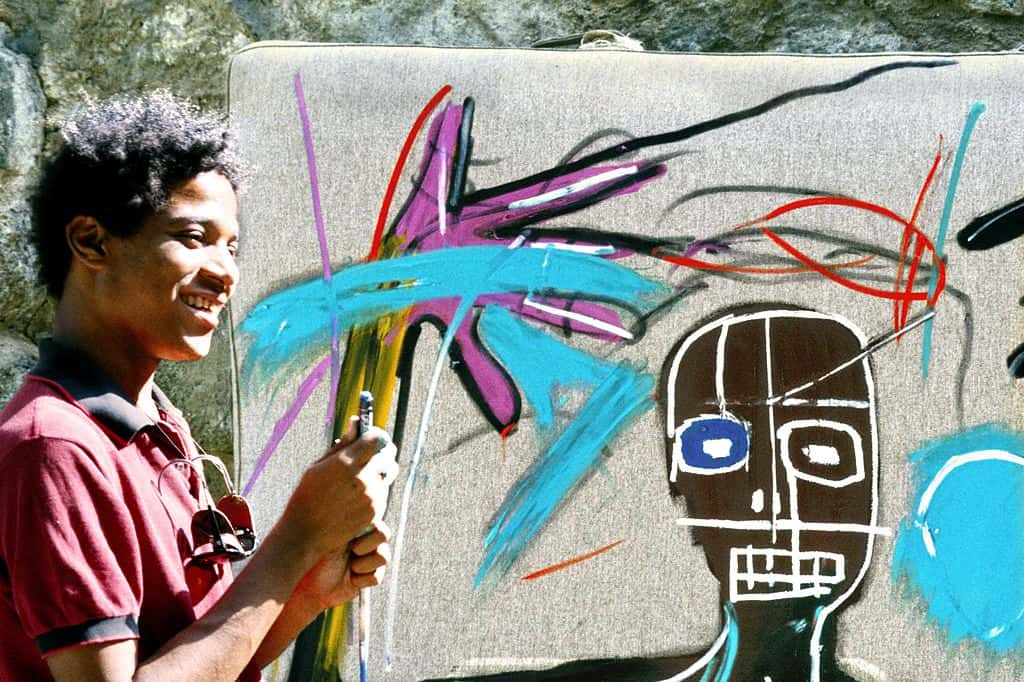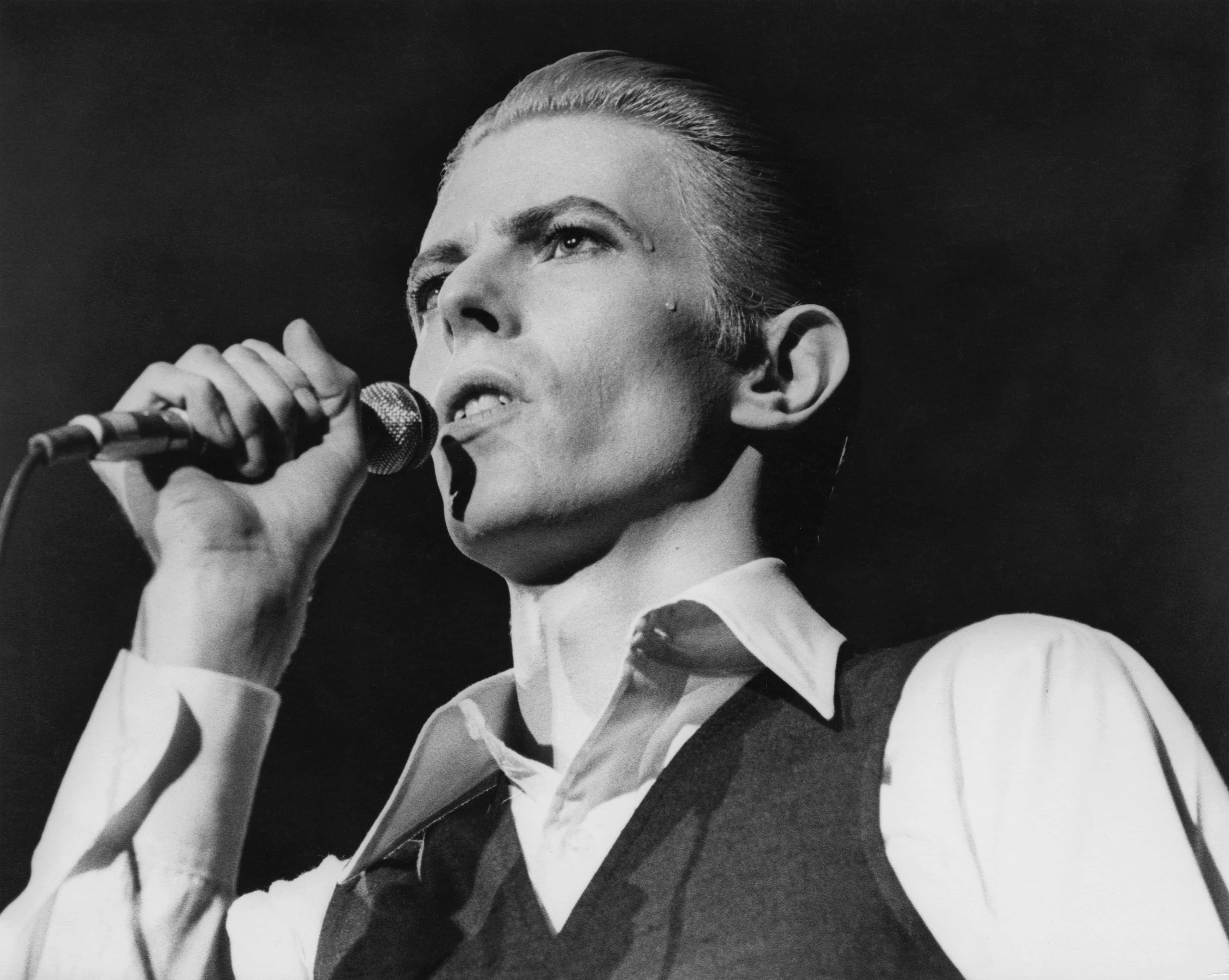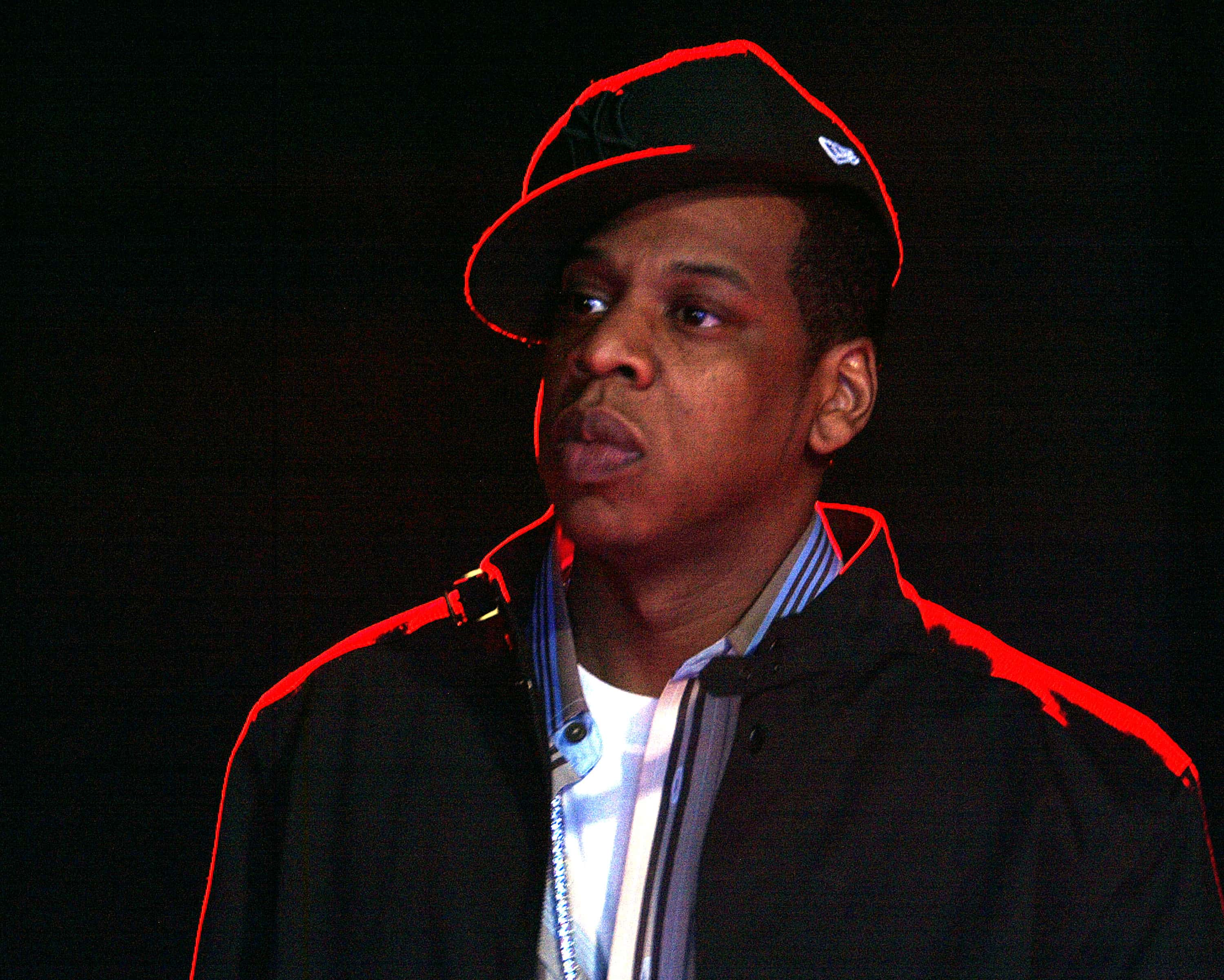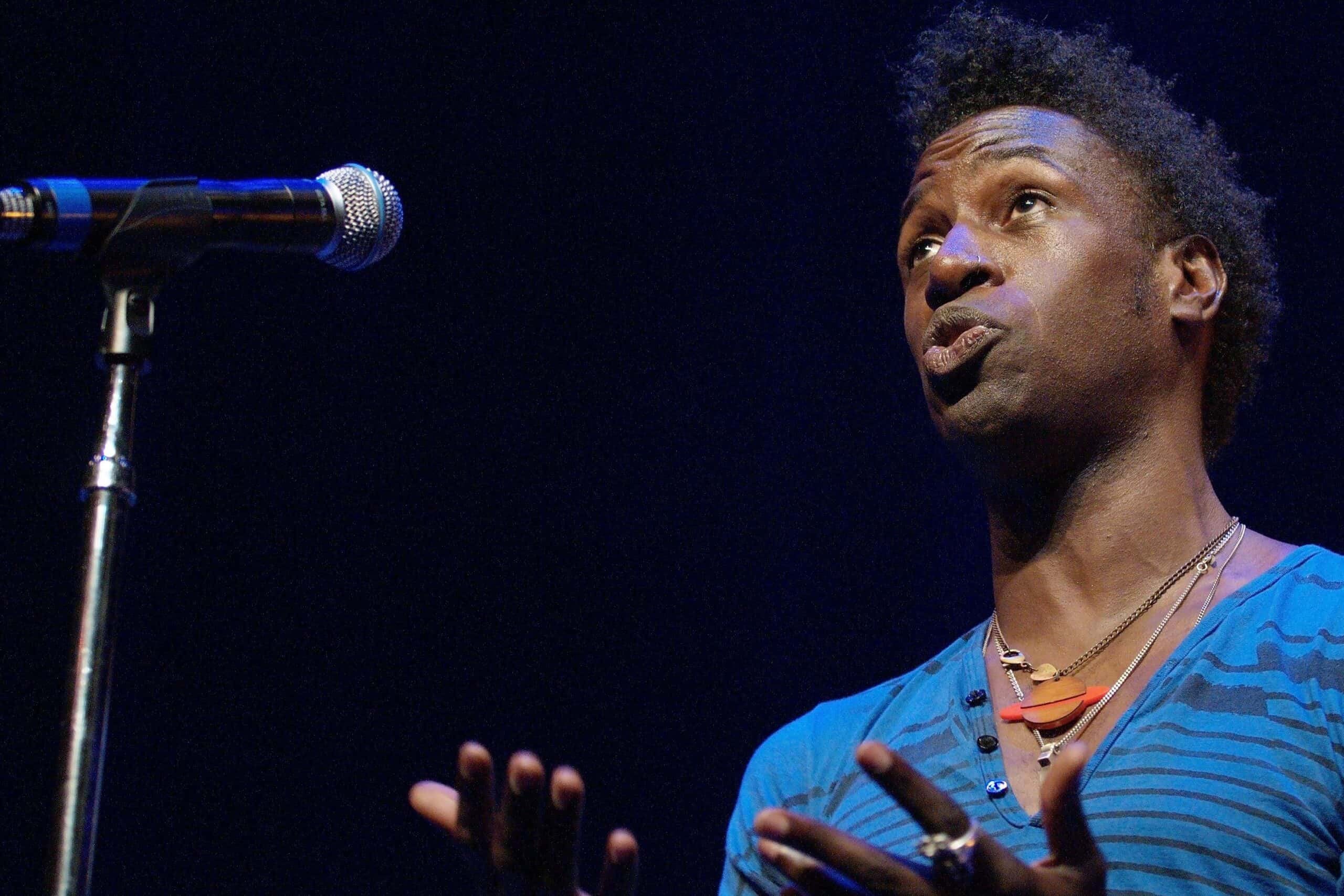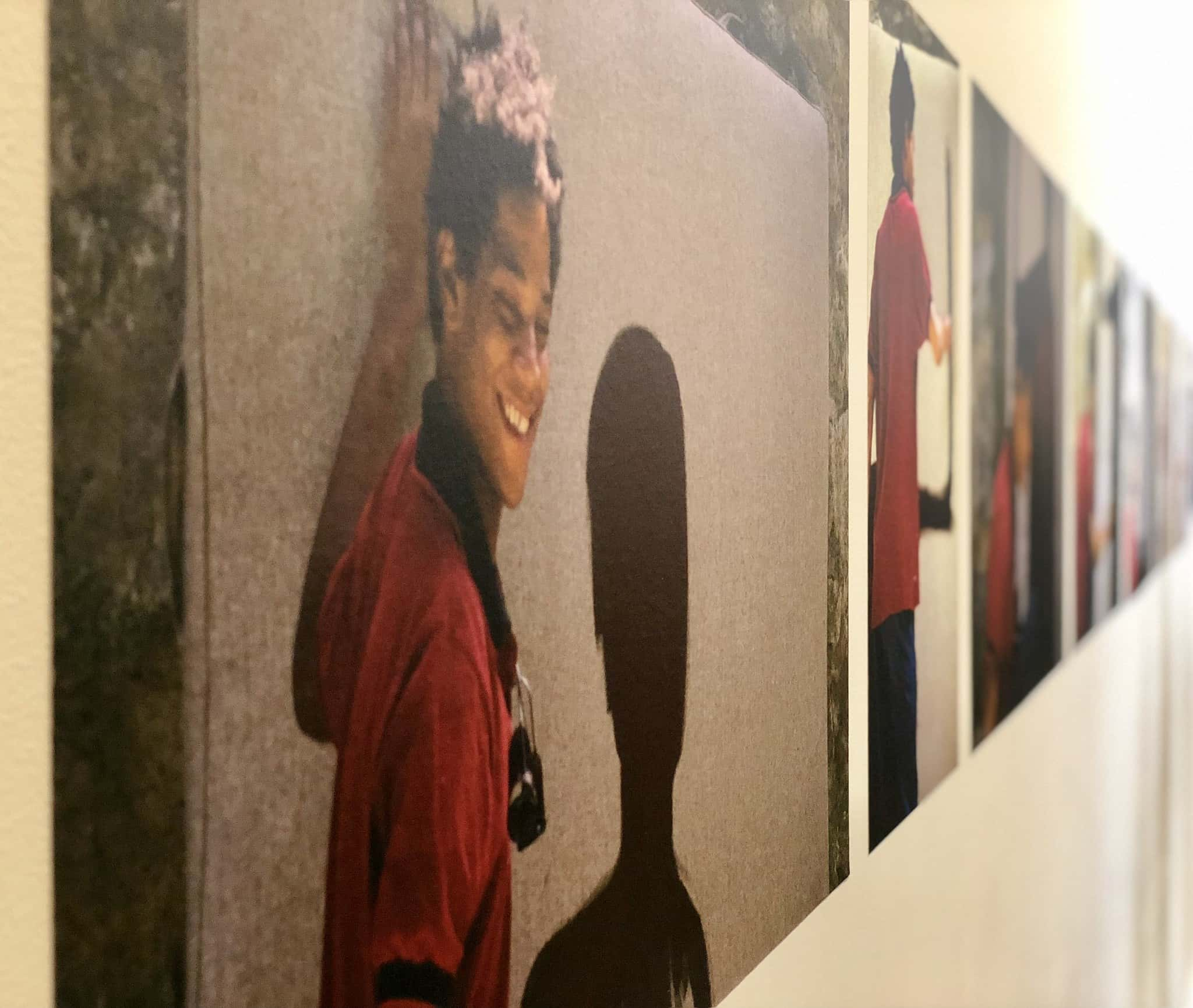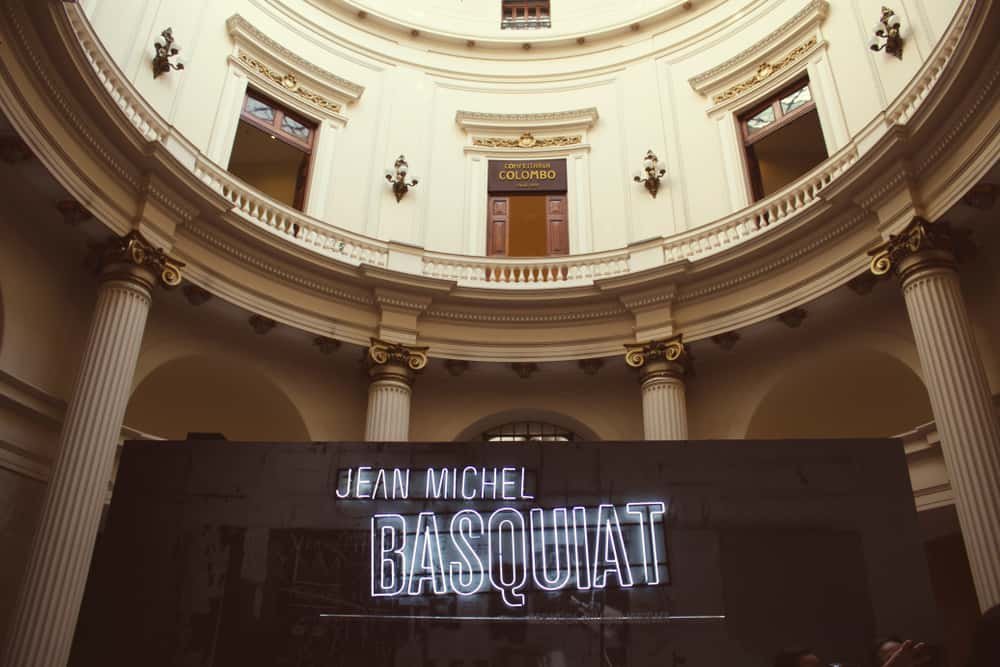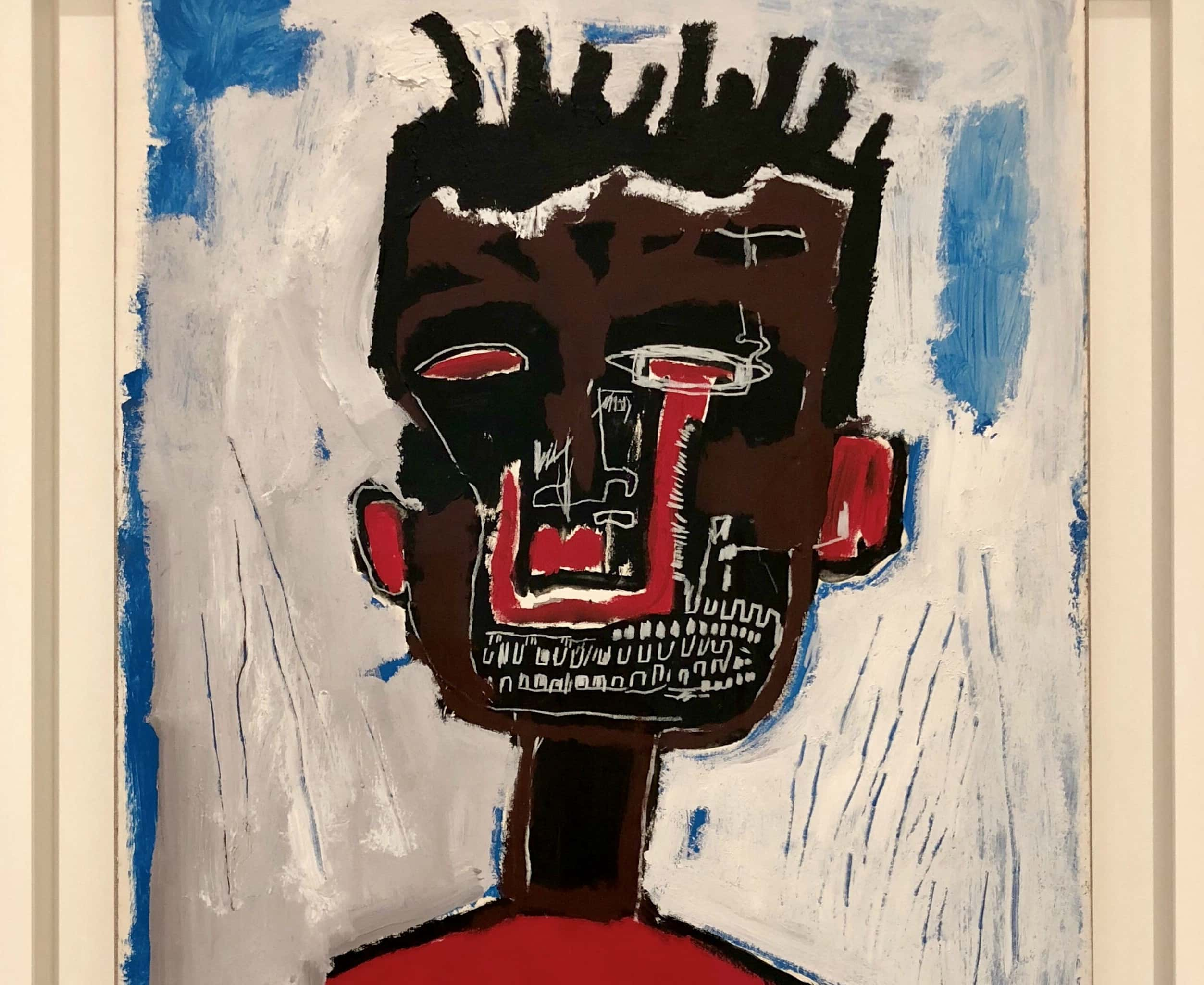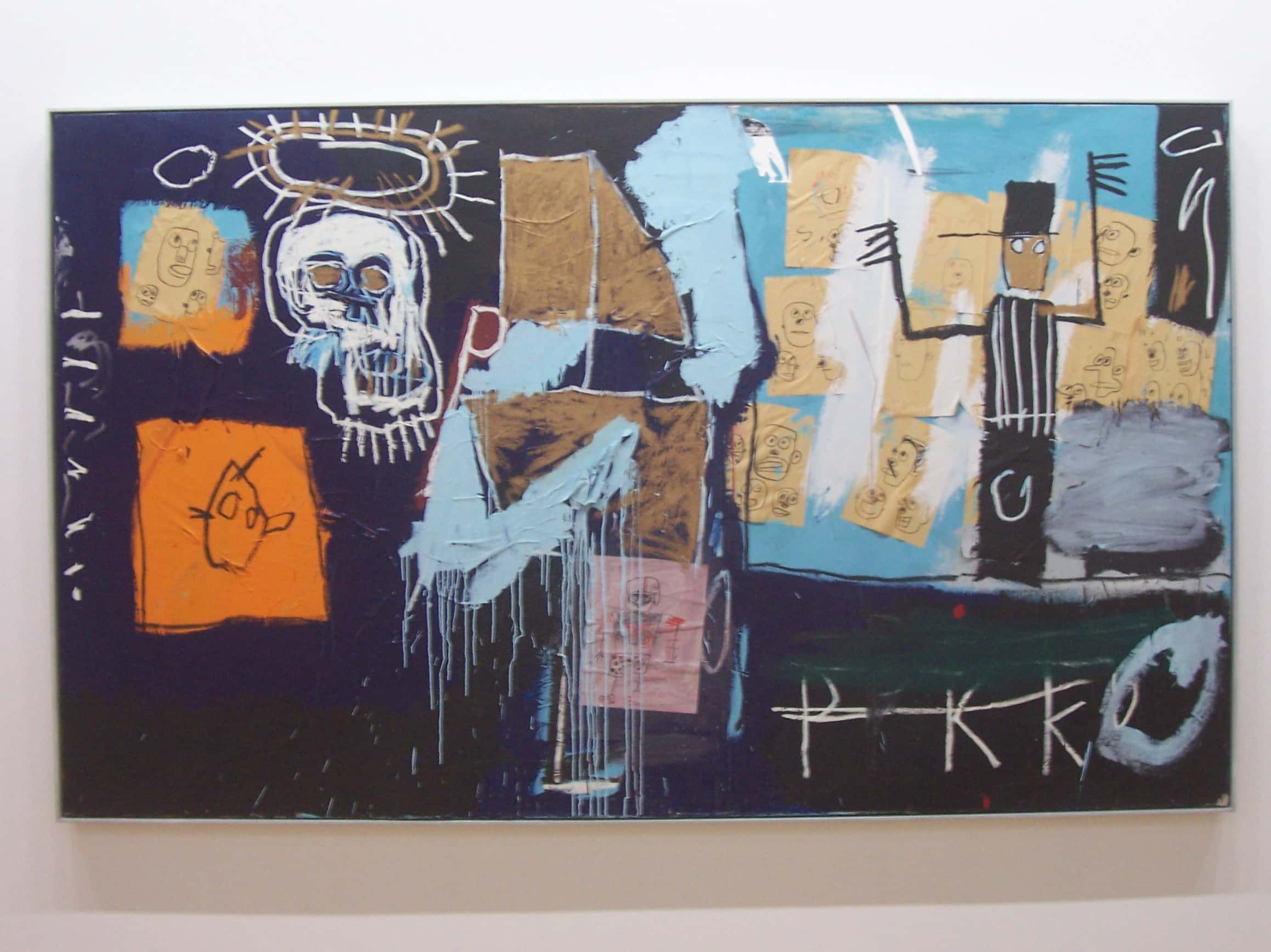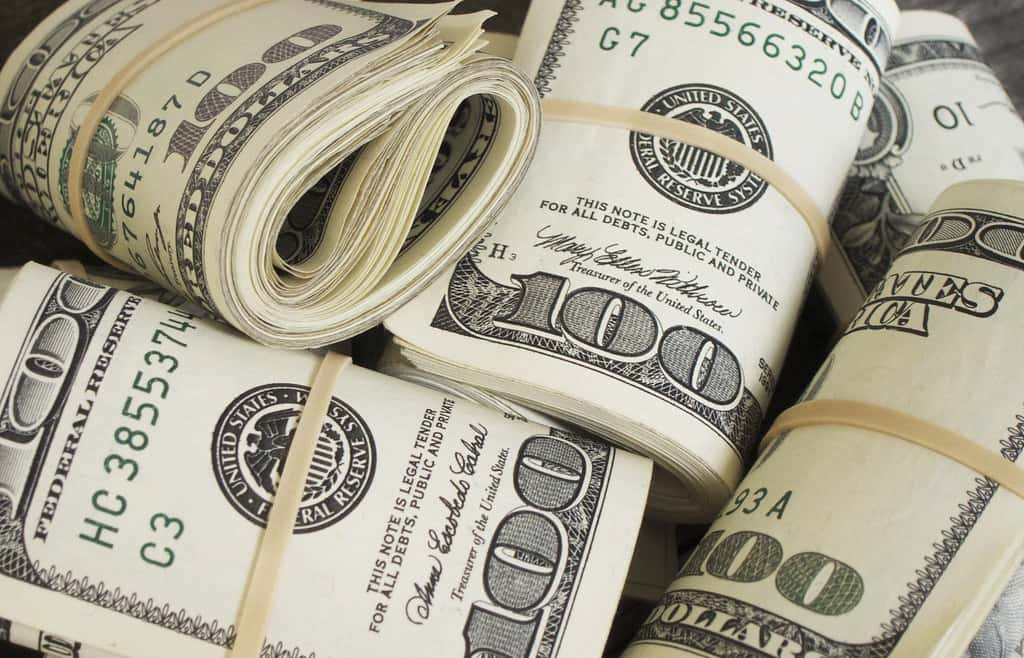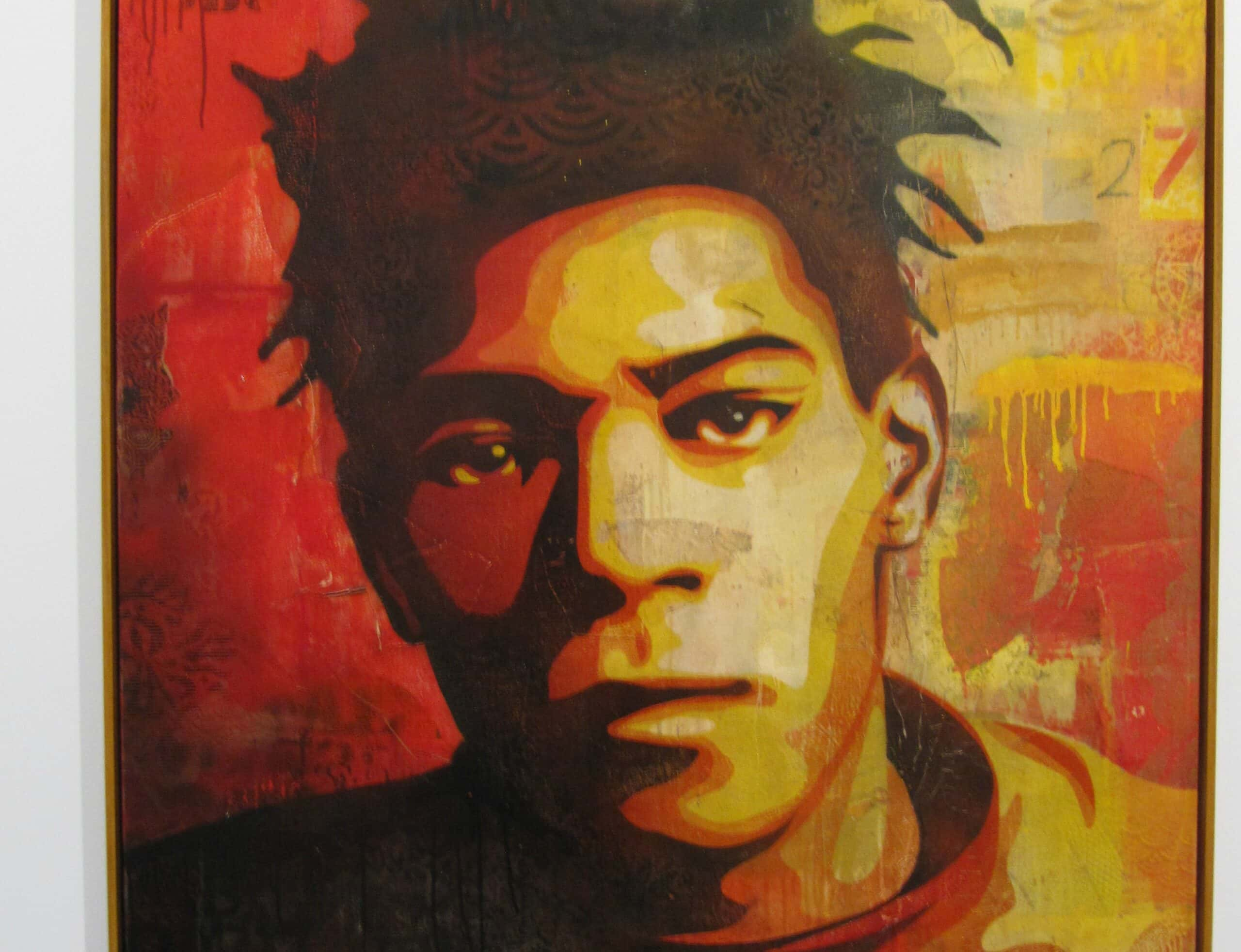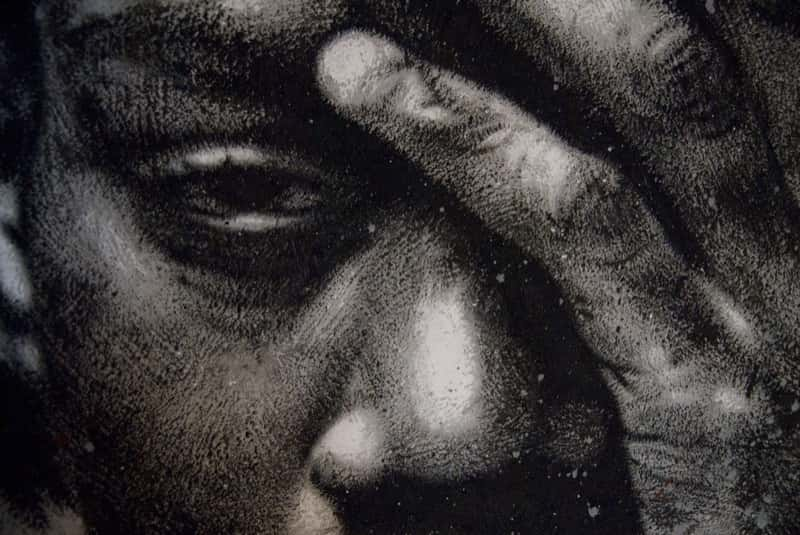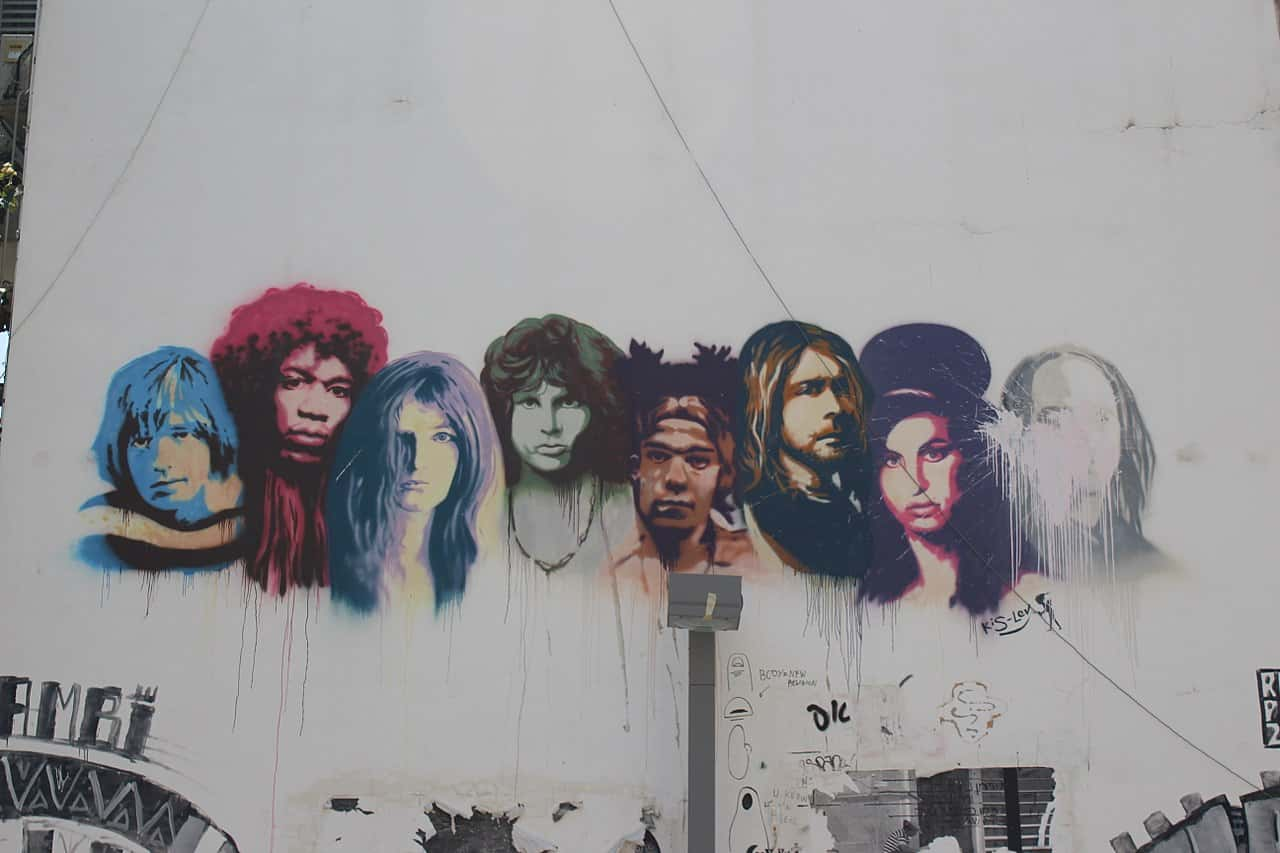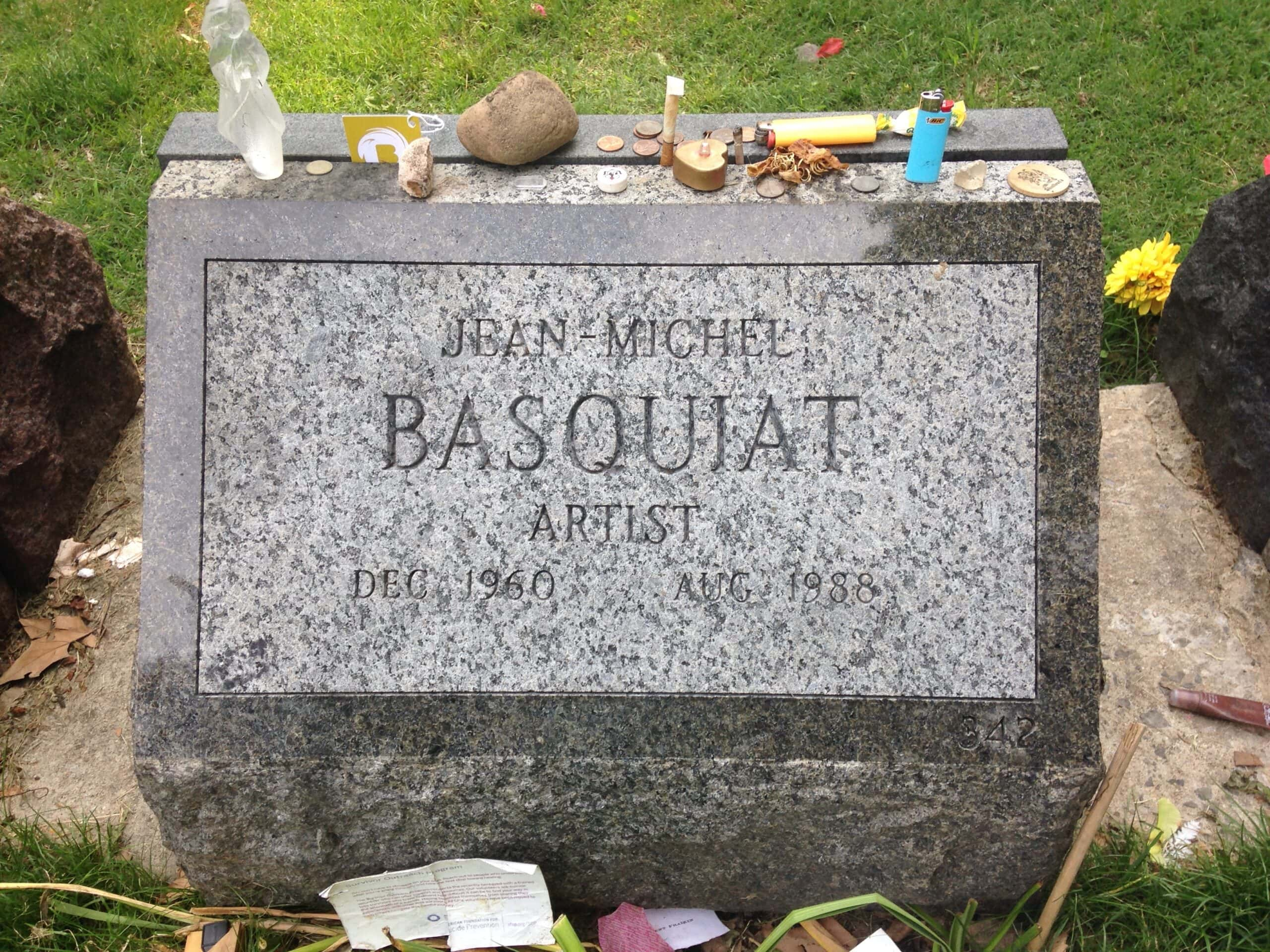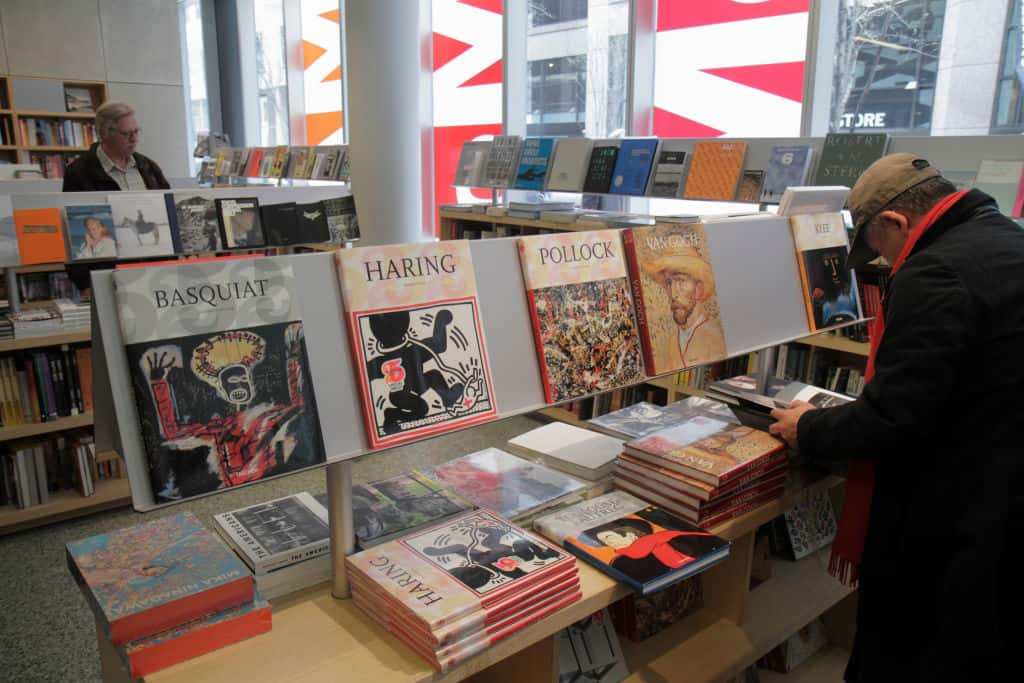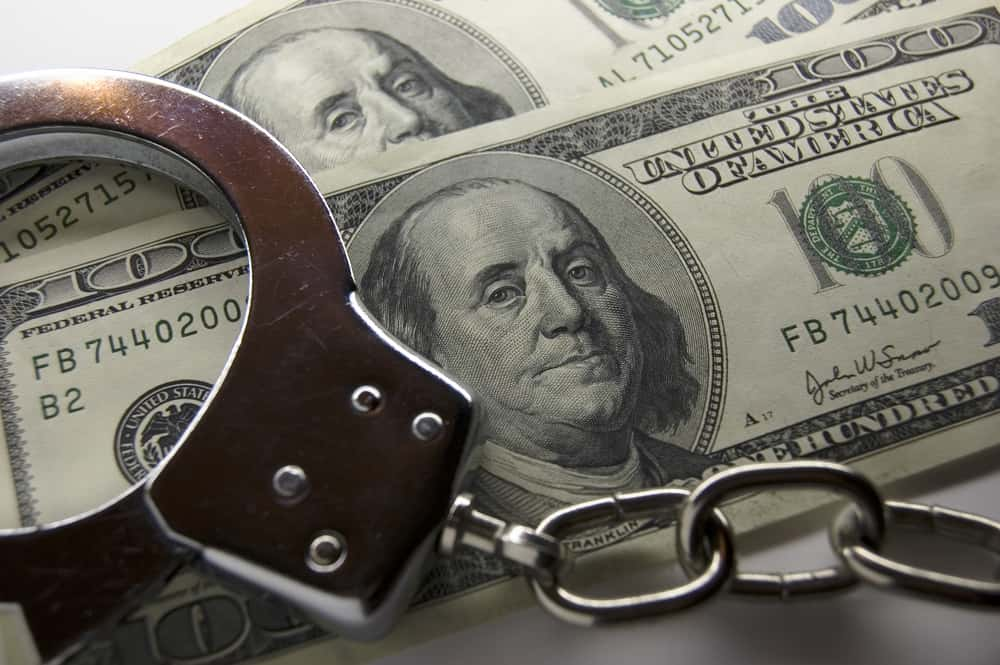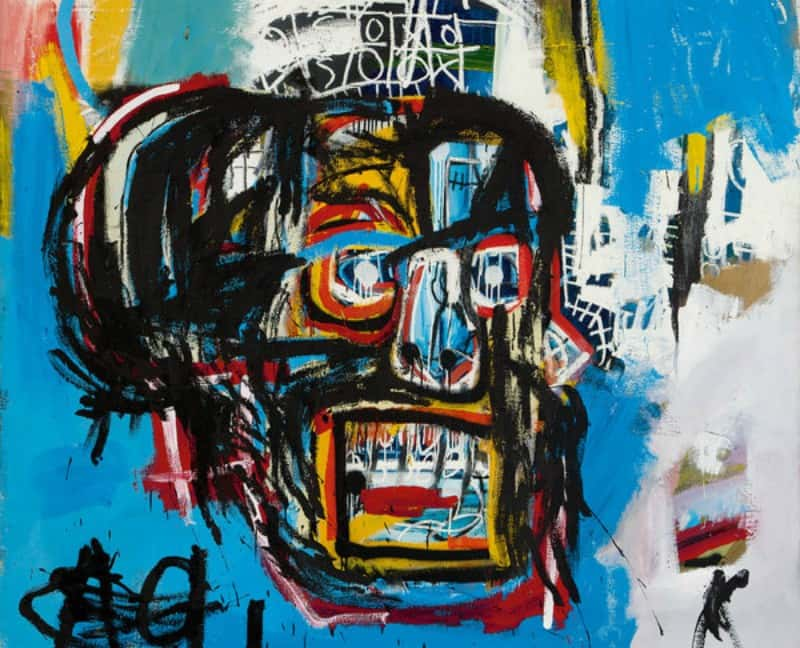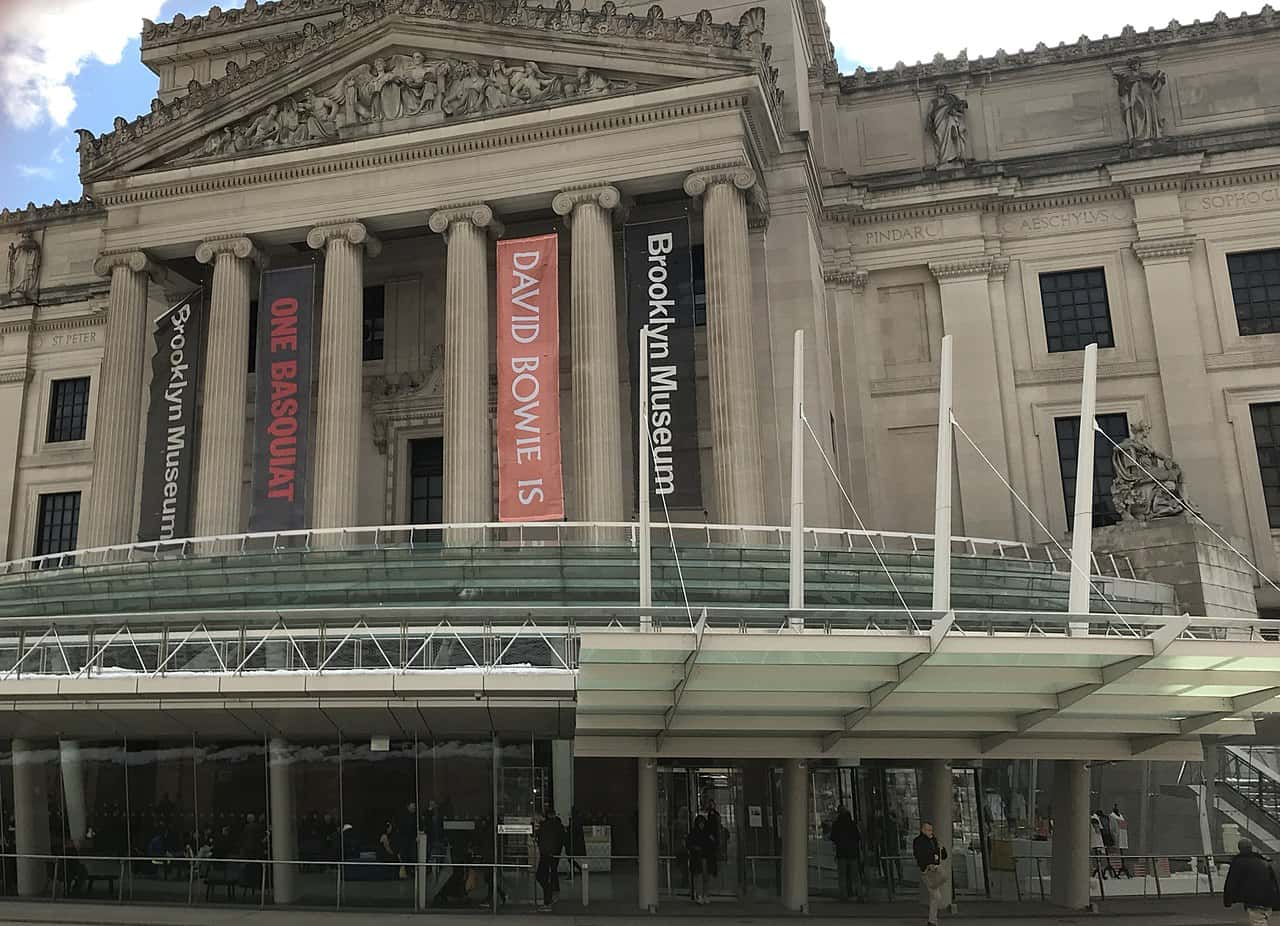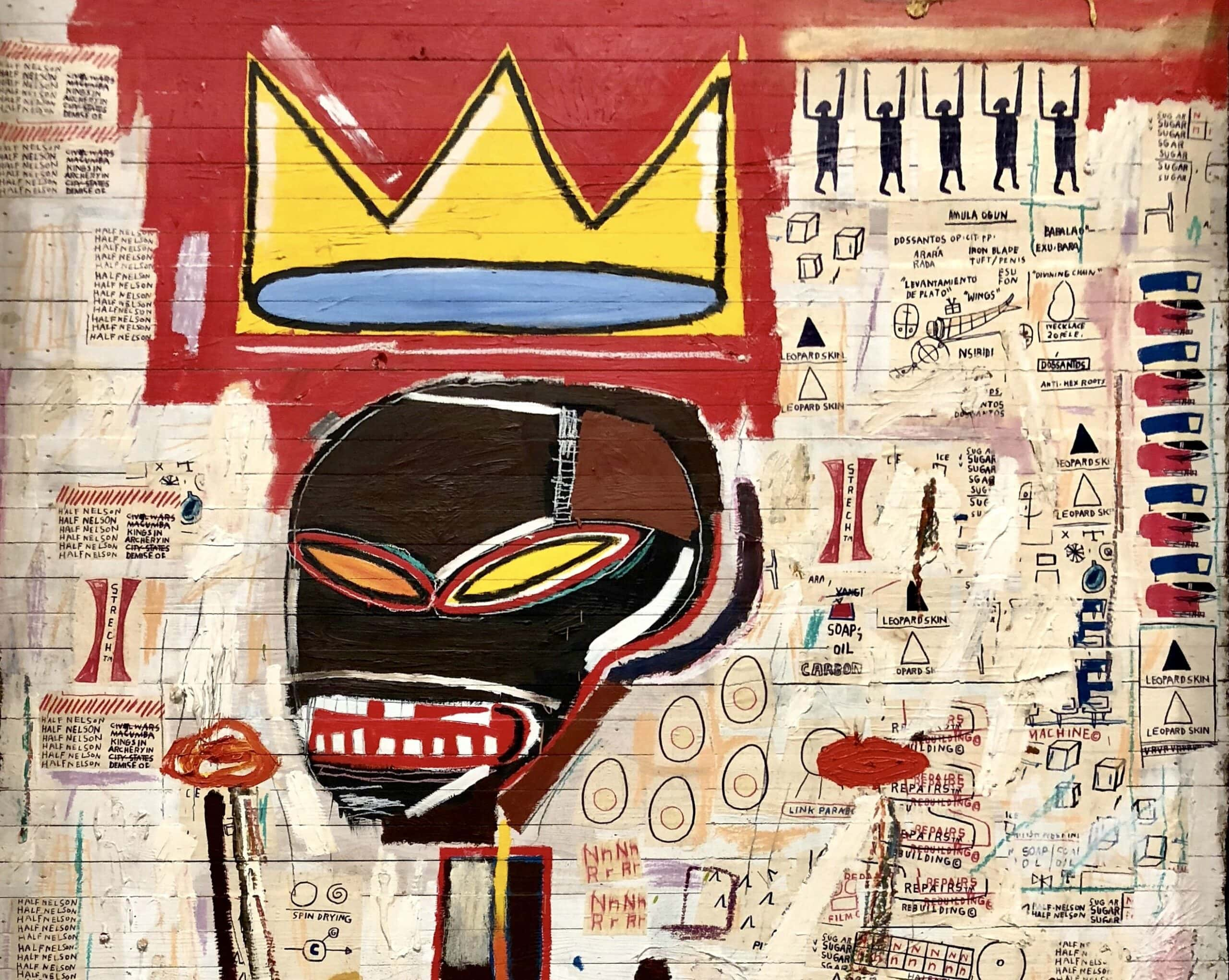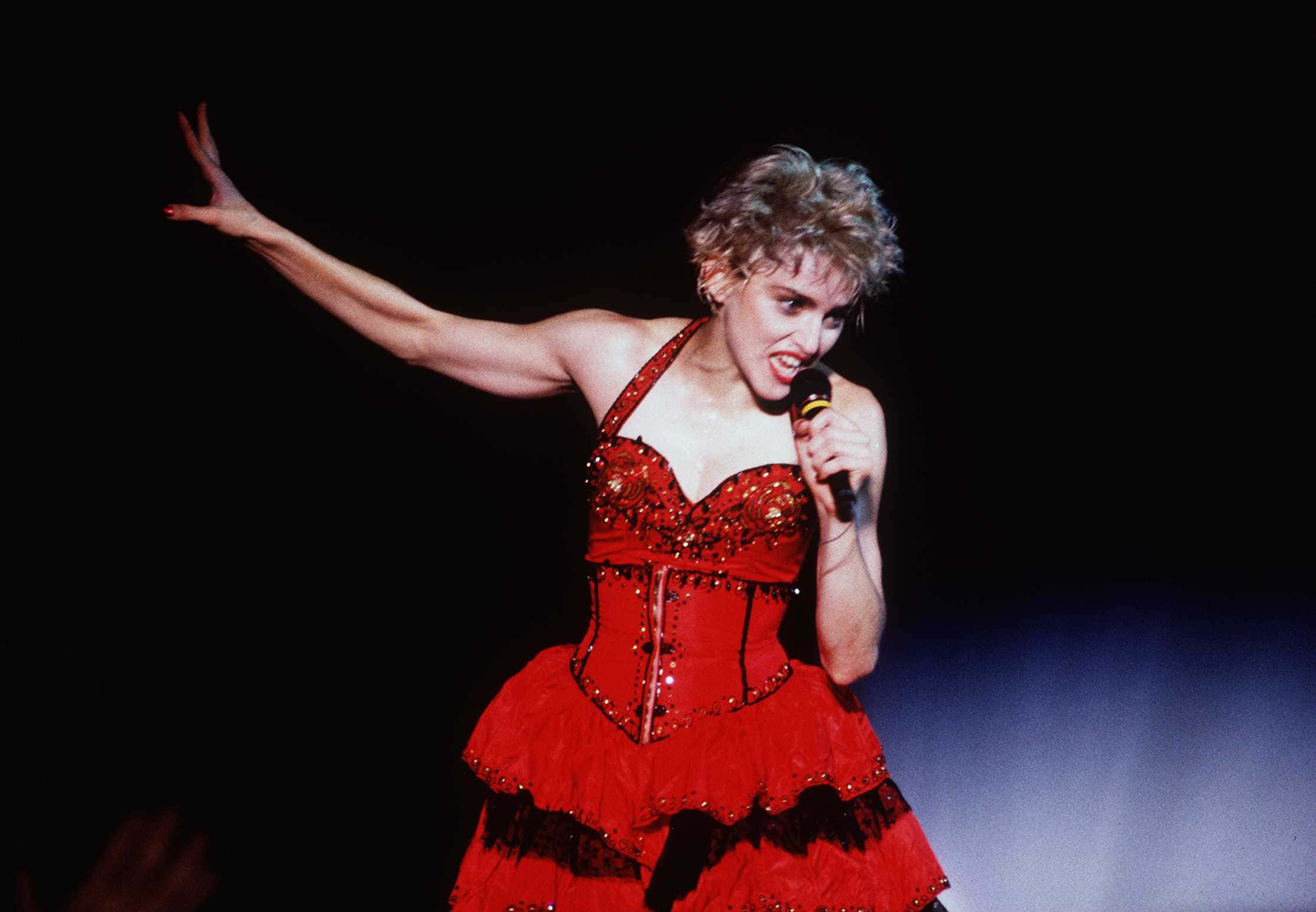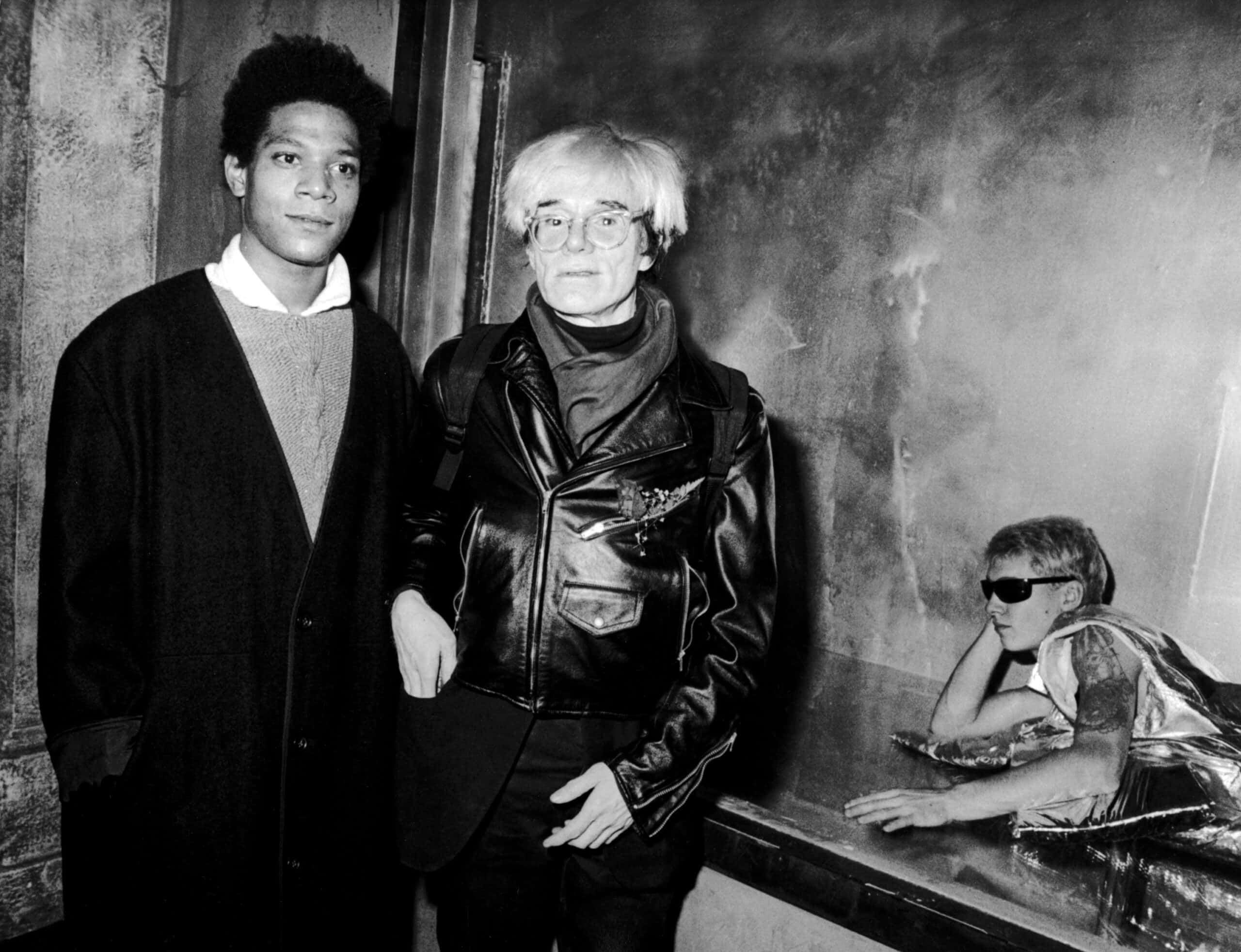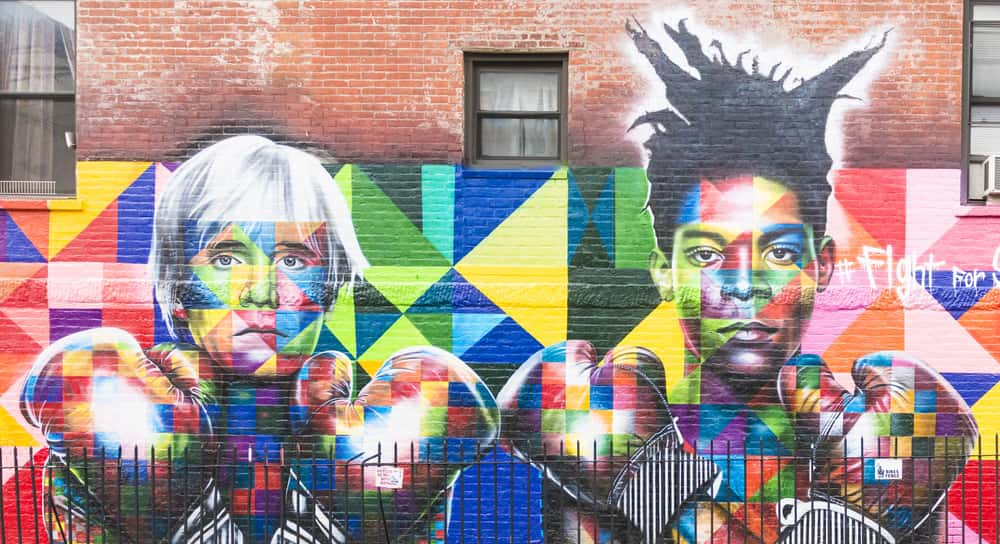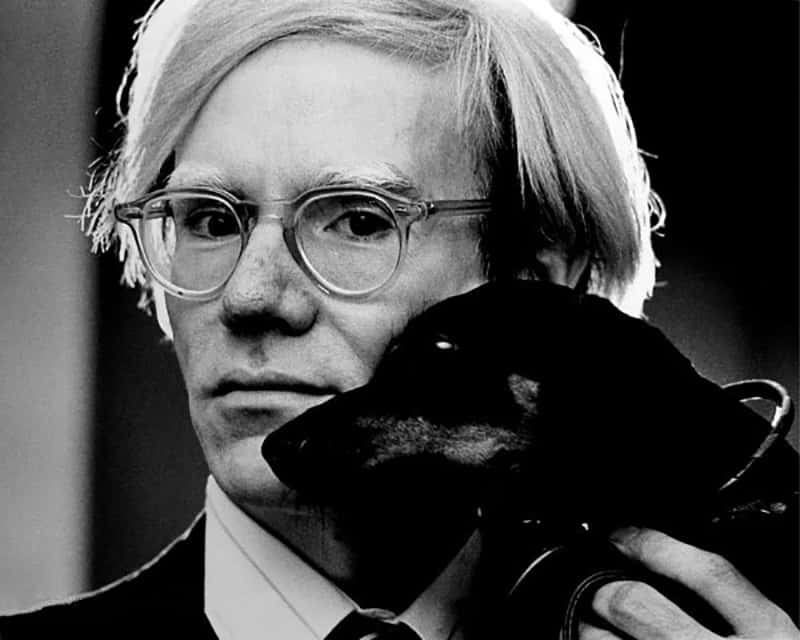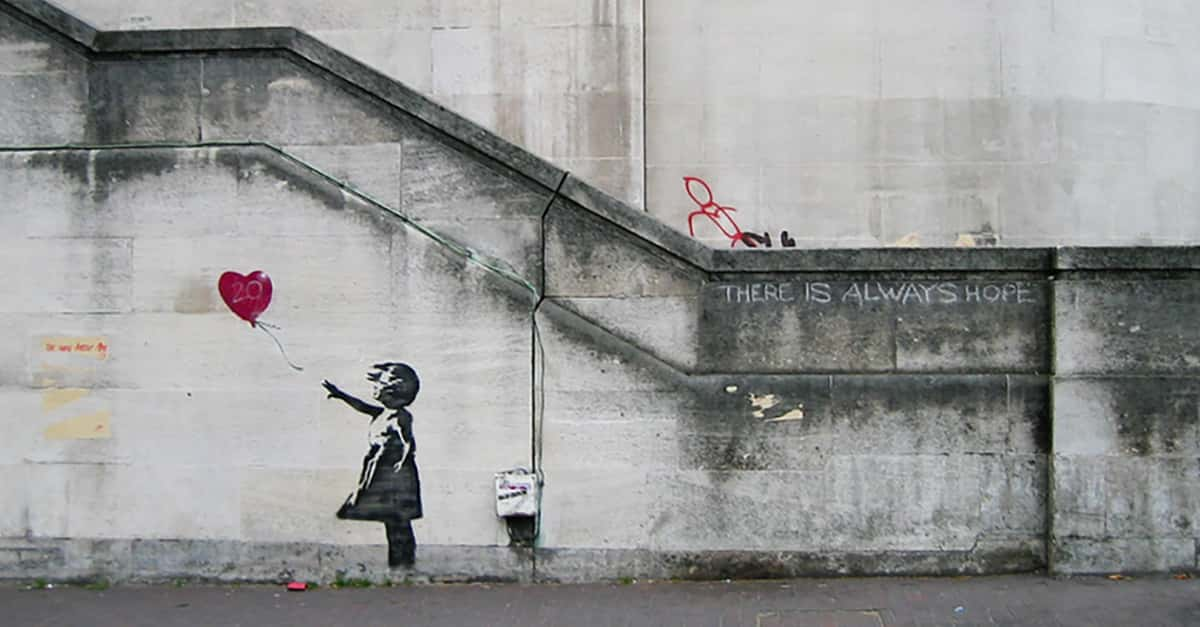Long before Banksy caught the world’s attention with his acerbic, socially conscious street art, there was Jean-Michel Basquiat. A true renaissance man, Basquiat dabbled in music, film, even fashion design, but he made his true mark in the art world. There, he helped to legitimize graffiti as an artistic medium. brought public attention to the nascent hip-hop subculture, and formed successful artistic partnerships with art luminaries like Keith Haring and Andy Warhol.
Basquiat’s career was cut tragically short, but this only added to his mystique: his passing at the age of 27 seemed to confirm Basquiat’s own pronouncement, “I am not a real person, I am a legend.” Here are 50 artistic facts about Jean-Michel Basquiat.
1. He Was Born in Brooklyn
Jean-Michel Basquiat was born on December 22, 1960, to Brooklynites Gerard and Matilde Basquiat. Matilde had been born into Brooklyn’s thriving Puerto Rican community, while Gerard had immigrated from his native Haiti. The Basquiat’s first son, Max, passed on shortly before Jean-Michel’s birth, so Jean-Michel grew up the eldest of three Basquiat children.
2. He Learned Quickly
With his international background and artistically inclined parents, Basquiat was a precocious child. He learned to read and write at age four, and by 11, he could speak English, French, and Spanish fluently. When he was six years old, Basquiat’s mother enrolled him as a junior member of the Brooklyn Museum of Art—a museum that would one day house his own paintings.
3. He Loved Cartoons
Basquiat’s mother was an amateur sketcher and fashion designer, and the young Jean-Michel quickly took up her passion for art. On blank paper brought home from his father’s accounting firm, Basquiat would practice drawing the cartoons he saw on television.
4. He Had a Whole Body of Work
When Jean-Michel Basquiat was just seven years old, tragedy struck. He was hit by a car, and the injuries were dire. Basquiat suffered several broken bones and even had to have his spleen removed. To keep him entertained as he recovered, Basquiat’s mother brought the young aspiring artist a copy of Gray’s Anatomy, a historic medical text renowned for its drawings of the human body.
There was a silver lining to the horrific accident: the collection had a profound effect on the budding artist, and its lessons about form and composition would stay with Basquiat for the rest of his life. When he released his first print portfolio in 1982, he named it Anatomy. Critics later noted the studied anatomical references hidden in Basquiat’s otherwise radical style.
5. He Was a Child of Divorce
Basquiat’s parents separated in 1968. Basquiat mostly stayed with his father—and the reason why was heartbreaking. Throughout those formative years, his mother was struggling with mental health issues and spent time in and out of a series of mental institutions. While his father provided a more stable home than his mother could have, he was less encouraging of Basquiat’s artistic ambitions.
Combine that with Basquiat’s rebellious nature, and you’ve got serious friction.
6. He Ran Away from Home…a Lot
Basquiat and his father lived briefly in Puerto Rico. When they returned to New York City, Basquiat began running away from home. He’d spend nights sleeping in Tompkins Square, but law enforcement always brought him home. When he dropped out of high school, it was the final straw. Basquiat's father threw him out of the house.
7. The City Was His School
Jean-Michael Basquiat didn’t drop out of school entirely. Rather, he stopped attending Edward Murrow High and began taking part in City-as-School, an alternative arts school in Manhattan. Founded in 1972, City-as-School used NYC as a venue for experiential learning. Notable alumni include Mos Def, Ad-Rock of the Beastie Boys, and Princess Nokia.
8. His Graffiti Made the News
While at City-as-School, Jean-Michel Basquiat struck up a friendship with a fellow student named Al Diaz. Like Basquiat, Diaz was a graffiti enthusiast, and the two began to collaborate on art together. Basquiat and Diaz invented a shared alter-ego and began tagging sites around Manhattan using their nom de plume, “SAMO.”
The SAMO pieces consisted mainly of murals peppered with slogans criticizing mainstream society and capitalism. The uniquely witty, subversive murals caught the attention of local art enthusiasts who wondered aloud, “Who is SAMO?” The mystery even earned an article in the influential underground newspaper The Village Voice.
9. He Knew It Wasn’t Easy Bein’ Cheesy
While City-as-School provided him with a stable artistic and educational community, the now-homeless Basquiat had to find ways to support himself. Selling postcards and t-shirts featuring his art provided a meager existence, and for a while, Basquiat was forced to live on 15-cent bags of Cheetos.

Sign up to our newsletter.
History’s most fascinating stories and darkest secrets, delivered to your inbox daily. Making distraction rewarding since 2017.
10. His Passion for Art Could Get Annoying
Effectively homeless, Basquiat couch-surfed and crashed at friends’ apartments. Basquiat could be hard to live with, and as a result, these stays were often short-lived. On at least one occasion, his host was left with no choice but to evict his guest: Basquiat would just not stop drawing on everything in the apartment.
11. The City Mourned SAMO
After a year of peppering uptown Manhattan with radical slogans and artwork, Basquiat and Al Diaz decided to end their partnership in 1979. An increasingly curious art world was shocked and disappointed when the duo’s surprisingly sinister announcements began appearing around SoHo. They commemorated the event by tagging several buildings with the statement: “SAMO IS DEAD.”
12. He Was a Fashionista
By now, Jean-Michel Basquiat had taken a job in the art department at the Unique Clothing Warehouse in Manhattan. Soon, he was “designing” his own clothes by painting over thrift-shop garments. Basquiat’s designs caught the eye of costume designer Patricia Field, who began selling the clothes at her trendy East Village boutique.
13. His Style Is Timeless
Basquiat remains a tastemaker. In 2007, GQ magazine named him one of the 50 most stylish men of the last 50 years. You can also find Basquiat’s designs on a signature line of clothing from the trendy clothing chain Urban Outfitters.
14. He Was Invited to the Party
With his star on the rise, Basquiat began making regular appearances on an influential public access tv show called TV Party. Hosted by Glenn O’Brien, TV Party helped introduce the broader public to the more avant-garde side of the New York arts and music scene; other guests included Debbie Harry, James Chance, and Klaus Nomi.
15. He Started a Band
In 1979, with punk and new wave at their respective heights, and rap in its infancy, Basquiat formed a band. Basquiat played synthesizer, guitar, and clarinet alongside filmmaker Michael Holman and actor Vincent Gallo. After several changes, the band eventually adopted the name Gray, in honor of Basquiat’s early inspiration, Gray’s Anatomy.
16. The Band Got Back Together
Gray was known for their abrasive, industrial sound, and frequently played gigs at New York’s punk mecca, CBGB. The band didn’t last long, but they reunited in 1988 to play at Basquiat’s funeral. Original members Holman and Nick Taylor continue to perform under the Gray name, and finally released the band’s debut record in 2011.
17. He Made a Legendary Hip Hop Record
Besides his noise rock oeuvre, Basquiat helped create a landmark hip-hop record, Beat Bop, which he recorded with his friend Rammellzee. Beat Bop arose from a heated rap battle between the two artists, and Basquiat held his own—but Rammellzee had other ideas. He replaced Basquiat on the recording with a more seasoned rapper named K-Rob.
Originally intended as just a test pressing, the record saw only a limited release and few copies remain in existence. Nevertheless, the record is considered extremely influential among hip-hop’s more inventive voices: Cypress Hill, the Beastie Boys, and DJ Tim Westwood all point to Beat Bop as a source of inspiration.
18. …or He Didn’t
Basquiat produced the cover art for Beat Bop, but he doesn’t appear on the record himself. Though Basquiat claimed to have served as producer for the record, Rammellzee states that production was actually handled by hip-hop legend Fab Five Freddy. Rammellzee would later say Basquiat “did nothing but foot the bill.”
19. He Was Friends with Keith Haring
Hustling his art in the parks and clubs of New York City, Basquiat befriended fellow artist Keith Haring. Their shared enthusiasm for street art led to a fruitful artistic relationship—that sometimes turned into something more. Haring became a famous artist in his own right and later honored Basquiat with a piece entitled A Pile of Crowns for Jean-Michel Basquiat.
20. He Visited Times Square
In 1980, Basquiat, Haring, and a host of other street-art influenced “Neo-Expressionist” painters banded together to produce their own exhibition in an unlikely place—and abandoned massage parlor in Times Square. Basquiat’s first public exhibition, the Times Square Show, placed him at the center of an exciting new movement in art.
21. He Preferred Blondes
Jean-Michel Basquiat sold his first painting for just $200. The buyers were Debbie Harry and Chris Stein, the married couple behind new wave supergroup Blondie. Basquiat would later appear in the video for the group’s “rap” single, “Rapture.” He played a DJ, filling in when Fab Five Freddy failed to show up.
22. He Got His Start in Italy
The Times Square Show brought Basquiat’s work to the attention of taste-making curator Diego Cortez. Cortez included Basquiat in the New York/New Wave exhibition at the Museum of Modern Art, and later arranged for Basquiat’s first solo show: an exhibition at a gallery in Modena, Italy, in 1981.
23. Fame Came Quickly
Basquiat officially became the Next Big Thing in American art with the publication of “The Radiant Child,” a 1981 article by Rene Ricard for Artforum. All of a sudden, everyone wanted to know the former street kid from Brooklyn. Agent and curator Annina Nosei signed up to represent Basquiat, and even went so far as to rent a loft for him and his girlfriend in SoHo.
Despite Nosei’s generosity, Basquiat jumped ship quickly: by the end of 1982, he was represented by one of the biggest art dealers in the world, Bruno Bischofberger.
24. He’s in With the In-Crowd
When they bought a piece by Basquiat, Debbie Harry and Chris Stein definitely started a trend. In the years since he sold his first painting, Basquiat has carved out a niche as a favorite of celebrity art collectors. Among notable figures who have bought Basquiat paintings are David Bowie, Johnny Depp, Leonardo DiCaprio, and Metallica drummer Lars Ulrich.
25. Jay-Z Wore His Clothes
Jay-Z in particular is a big fan of Basquiat’s. Not only did Hova compare himself to Basquiat on his song “Picasso Baby,” he actually dressed up as the artist for Halloween back in 2014. Not to be outdone, Jay-Z’s wife, Beyoncé, showed up dressed as Mexican artist Frida Kahlo.
26. He Was a Movie Star
In 1980, Jean-Michel Basquiat began to work on a movie called Downtown ’81, where he played a fictionalized version of himself. The movie was directed by Edo Bertoglio and featured several other members of the New York arts scene. But for years, no one saw it—it disappeared for nearly two decades under mysterious circumstances.
Before Downtown could be released, the film’s production company became embroiled in a political scandal and the print disappeared. Writer Glenn O’Brien searched everywhere for a copy of the film, even enlisting the help of Italian courts. A copy was eventually found and Downtown finally debuted at the 2000 Cannes festival.
27. He Had the Voice of a Poet
While O’Brien managed to locate the footage of the film, as well as the original music recordings, he was unable to find the voice soundtracks—all dialogue remained lost and had to be re-recorded. As Basquiat was no longer available to re-record his dialogue, his part was overdubbed by the poet Saul Williams.
28. He Had a Hard Time with Art Dealers
While his relationship with his worldwide art dealer, Bruno Bischofberger, remained constant, Basquiat could be combative with local dealers. He often found himself without representation in the US. Asked by an interviewer whether it was easier to get along with girlfriends or art dealers, Basquiat replied, “They’re about the same.”
29. He Showed at Documenta
In 1982, Basquiat became the youngest artist to ever exhibit at the Documenta exhibition in Germany. A kind of art Olympics, Documenta happens only once every five years; exhibiting there was a huge achievement. At just 21, Basquiat’s was rubbing shoulders with giants like Gerhard Richter, Cy Twombly, and his hero, Andy Warhol.
30. He Had Style
Basquiat worked mainly in mixed media (paint, magic marker, and oil pens), blending techniques from graffiti, anatomical drawing, and portraiture. He frequently sought to represent the black experience in America, repurposing elements of the Western canon and African iconography to birth a uniquely black American form.
31. He Defied the Critics
With his brash style and sharp insights into Black America, Jean-Michel Basquiat grew to become the most famous and fashionable artists of the 1980s. But that’s not to say Basquiat won universal acclaim. Many older, established critics resisted the vibrant new style of artists like Basquiat and his fellow Neo-expressionists.
Time art critic Robert Hughes compared Haring to “a disco decorator”; his critique of Basquiat was even harsher, going so far as to call him “young, loud, and invincibly dumb.” Basquiat, however, was not phased. Endlessly cool and self-assured of his talents, he merely replied, “Believe it or not, I can draw.”
32. He Wasn’t Welcome Everywhere
As confident as Basquiat was in his talents, it remained clear that his work was not for everybody. Collectors Lenore and Herbert Schorr tried to donate some of his work to the Museum of Modern Art and the Whitney Museum of Modern Art. Basquiat had established himself as a leading artist…yet both institutions declined the offer.
Years later, he’d prove them wrong…
33. He Held on to His Money
Whatever the critics thought, Basquiat made—and spent—ridiculous amounts of money. The once-homeless, newly rich artist painted in thousand-dollar Armani suits, which he would then wear to his exhibitions, complete with paint splatters across his sleeves and lapels. He cruised around New York in a limo, tossing $100 bills out the windows—but there was an even more bizarre side to it all.
Despite this sudden influx of cash (or perhaps because of it), Basquiat was deeply mistrustful of banks. He refused to keep a bank account, preferring to hide his money in various spots around his loft. Friends would come over and discover hundreds of dollars tucked between the pages of books or rolled up the couch cushions.
34. He Had a Big Problem
As his fame rose and his wealth exploded, so did his darker tendencies. Basquiat’s friends were becoming increasingly concerned about his health. His substance use problems were worsening, and his newfound wealth allowed him to indulge them with little caution or care. At one point, Basquiat claimed to be taking more than 100 bags of opiates every single day.
35. It Came Back to Haunt Him
Basquiat’s childhood accident had lifelong consequences. His substance misuse was exacerbated by the car accident he suffered as a child. Basquiat’s spleen had been removed, leaving his body unable to clean out the toxins left by the stuff he was taking. The lingering toxins left noticeable dark splotches over his skin, visible in Warhol’s portraits of Basquiat.
36. His Life Was Cut Short
Sadly, the hard living couldn’t last forever. Basquiat’s substance misuse eventually caught up with him, and he passed on in 1988 while at his studio in New York City. At just 27 years of age, Basquiat joined Jimi Hendrix, Jim Morrison, and Kurt Cobain as an unhappy member of the “27 Club,” a group of cultural icons who all coincidentally passed at the same age.
37. He Was a Poet’s Muse
At his memorial service, Basquiat’s long-time girlfriend, Suzanne Malouk, made a heartbreaking tribute to him. She read “Poem for Basquiat” by AR Penck, a poem written in honor of the young artist. Penck is not the only one to find poetry in Basquiat’s life. In 1991, Kevin Young published To Repel Ghosts, a collection of 117 poems based on Basquiat’s life and art.
38. He is the Star of Several Picture Books
In a fitting tribute to a game-changing, genre-shifting artist, Basquiat has also been the subject of a graphic novel (called Basquiat: A Graphic Novel), and an award-winning picture book for children (The Radiant Child). In 1993, Basquiat’s own art was published in a children’s book alongside a poem by Maya Angelou.
39. Lots of People Wanted to Be in His Movie
1996 saw the release of Basquiat, a biopic directed by Basquiat’s friend, artist Julian Schnabel. Basquiat featured performances by a who’s who of well-known character actors all eager to demonstrate their appreciation of the artist including Gary Oldman, Dennis Hopper, Willem Dafoe, and Basquiat’s one-time bandmate, Vincent Gallo.
One Hollywood star who did not make an appearance in Basquiat was comedian Chris Rock. Rock was originally considered for the lead in the Basquiat biopic but Rock, who was apparently not much an art buff, had never even heard of Basquiat and declined the offer. The role went instead to Jeffrey Wright.
40. Bowie Brought a Special Prop
Rock n Roll Hall of Famer and art aficionado David Bowie makes an appearance in the film as Basquiat’s one-time collaborator Andy Warhol. Bowie, a fan of both Warhol and Basquiat, really got into character, showing up on set each day wearing the familiar white wig that had once been worn by Warhol himself.
41. Julian Schnabel Had to Bring His Art Supplies
Strangely enough, Basquiat’s estate refused to license any of his original artwork for the biopic. It would be nearly impossible, of course, to do a movie about Basquiat without showing any of his art, so director Julian Schnabel personally created reproductions of Basquiat originals to be shown onscreen.
42. Basquiat’s Style Can’t Be Faked
Schnabel was not the only artist who tried to recreate Basquiat’s work—criminals got in the action too. In 2001, an artist-turned-con artist named Alfredo Martinez was detained and charged with fraud. He had tried to sell two New York art dealers a set of “original” drawings by Basquiat for $185, 000. Martinez had even forged certificates of authenticity.
Basquiat’s estate does have an authentication committee to prevent such forgeries and verify “new” works; to date, they have analyzed more than 2,000 submissions. The committee is currently on hiatus, but past committee members have included Basquiat’s father, Gerard, and his former gallerists Diego Cortez and Annina Nosei.
43. He’s a Record-Breaker
In 2017, Japanese art collector Yusaku Maezawa bought Basquiat’s 1982 painting Untitled for a whopping $110.5 million—that’s nearly twice the originally estimated value of the piece! With Maezawa’s purchase, Basquiat shattered the old record for the highest price ever paid at auction for a piece by an American artist.
44. He Had a Solo Show
To celebrate Basquiat’s achievement, an exhibition was staged devoted solely to his record-breaking painting. The exhibition, entitled One Basquiat, was held at the Brooklyn Art Museum—the same museum he visited with his mother as a child and which ignited his great passion for art.
45. He Left a Huge Body of Work
Despite his brief career, Basquiat left over 1,500 drawings and 600 paintings—a testament to the compulsiveness of his creative spirit. Perhaps Keith Haring said it best in his eulogy to Basquiat: “He truly created a lifetime of works in ten years…Only now will people begin to understand the magnitude of his contribution.”
46. He Crowned Kings
A recurring motif in Basquiat’s art was a crown. A friend and fellow artist explained that Basquiat’s crown had three points to represent his three “royal lineages”: poet, musician, athlete. However, art critics have noticed that Basquiat often placed crowns atop portraits of notable Black figures—Charlie Parker, Joe Louis, and others. It was his way of elevating his marginalized heroes to the status of kings or saints.
47. He Dated Pop Royalty…Before She Was Famous
In 1982, Basquiat began dating Madonna; at the time, she was little more than an unknown nightclub singer with big ambitions. The future Material Girl even lived with Basquiat briefly after he relocated to Los Angeles. When the couple broke up, Basquiat took back all the paintings he had given her and painted them all black.
48. He Worked with His Hero
Jean-Michel Basquiat had already met Andy Warhol after a lucky run-in at a New York City nightclub in 1980. Basquiat even managed to sell the legendary pop artist one of his postcards. Warhol happened to be close friends with Bruno Bischofberger, and later, when Bischofberger had signed Basquiat, he recommended that the two collaborate.
For three years, from 1983 to 1985, Basquiat and Warhol worked side by side in one of the most promising collaborations of the 20th century. Doing their best to merge their two approaches, Warhol would paint his more “traditional” pop art work, and Basquiat would cover the paintings with his signature graffiti.
49. Critics Drove Them Apart
By most accounts, the collaboration between Basquiat and Warhol was mutually beneficial: Warhol brought a broader audience to Basquiat’s work, while Basquiat helped reinvigorate the aging pop-artist and keep him in the eye of younger audiences. But sadly, they were torn apart by outside forces. Their joint exhibition, Paintings, shown at the Tony Shafrazi Gallery, was panned by critics, with one going so far as to call Basquiat “Warhol’s mascot.”
The characterization naturally annoyed the proud Basquiat and the collaboration came to an end. By 1986, Warhol and Basquiat were not even on speaking terms.
50. He Mourned Warhol
Although their partnership had ended, Basquiat was devastated when Warhol passed on. One friend remarked that Basquiat was literally left speechless by the news. In tribute to his friend and mentor, Basquiat created Gravestone, a triptych of disused doors hinged together and painted over with grim imagery.
Sources: 1, 2, 3, 4, 5, 6, 7, 8, 9, 10, 11, 12, 13, 14, 15, 16, 17, 18


